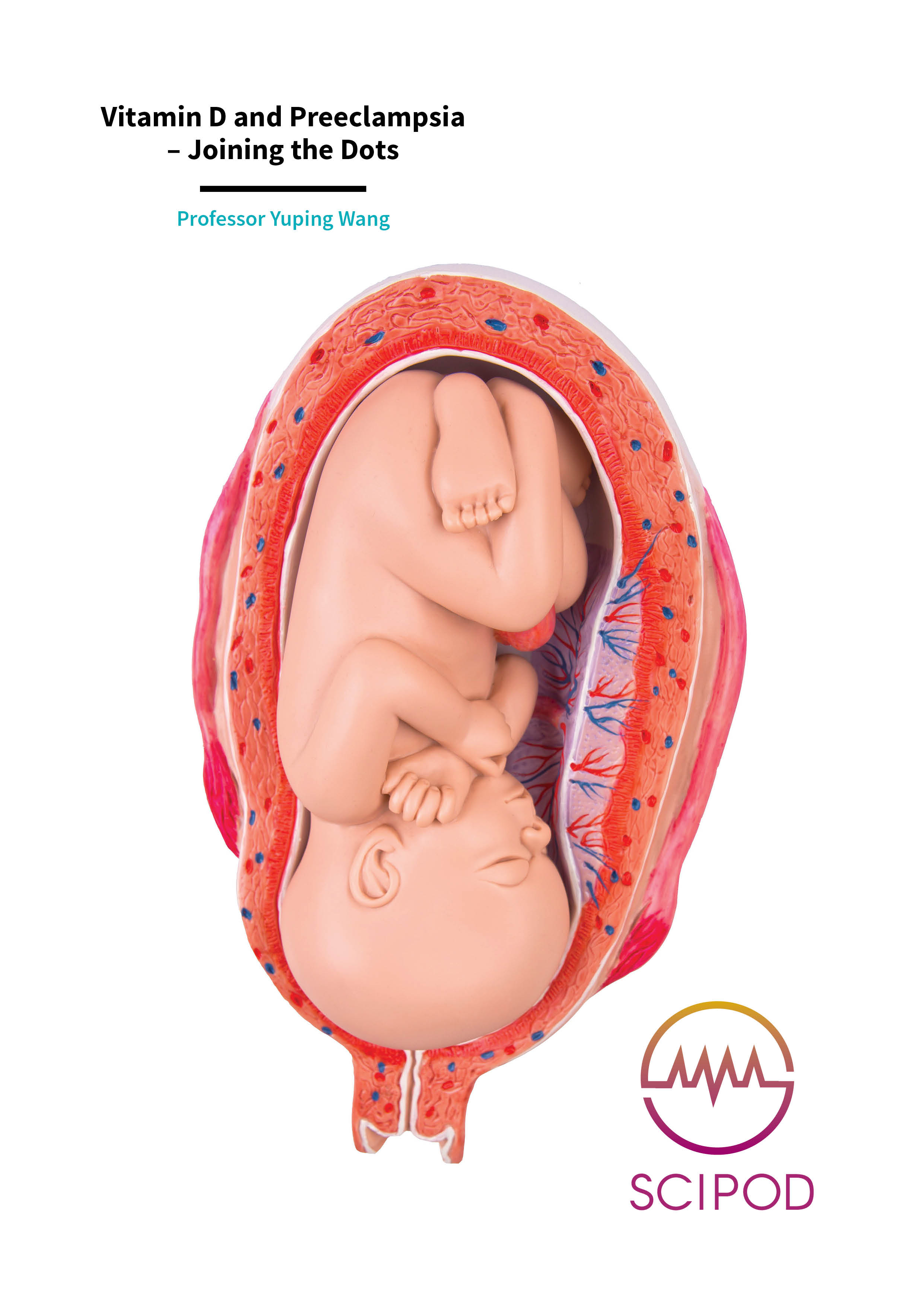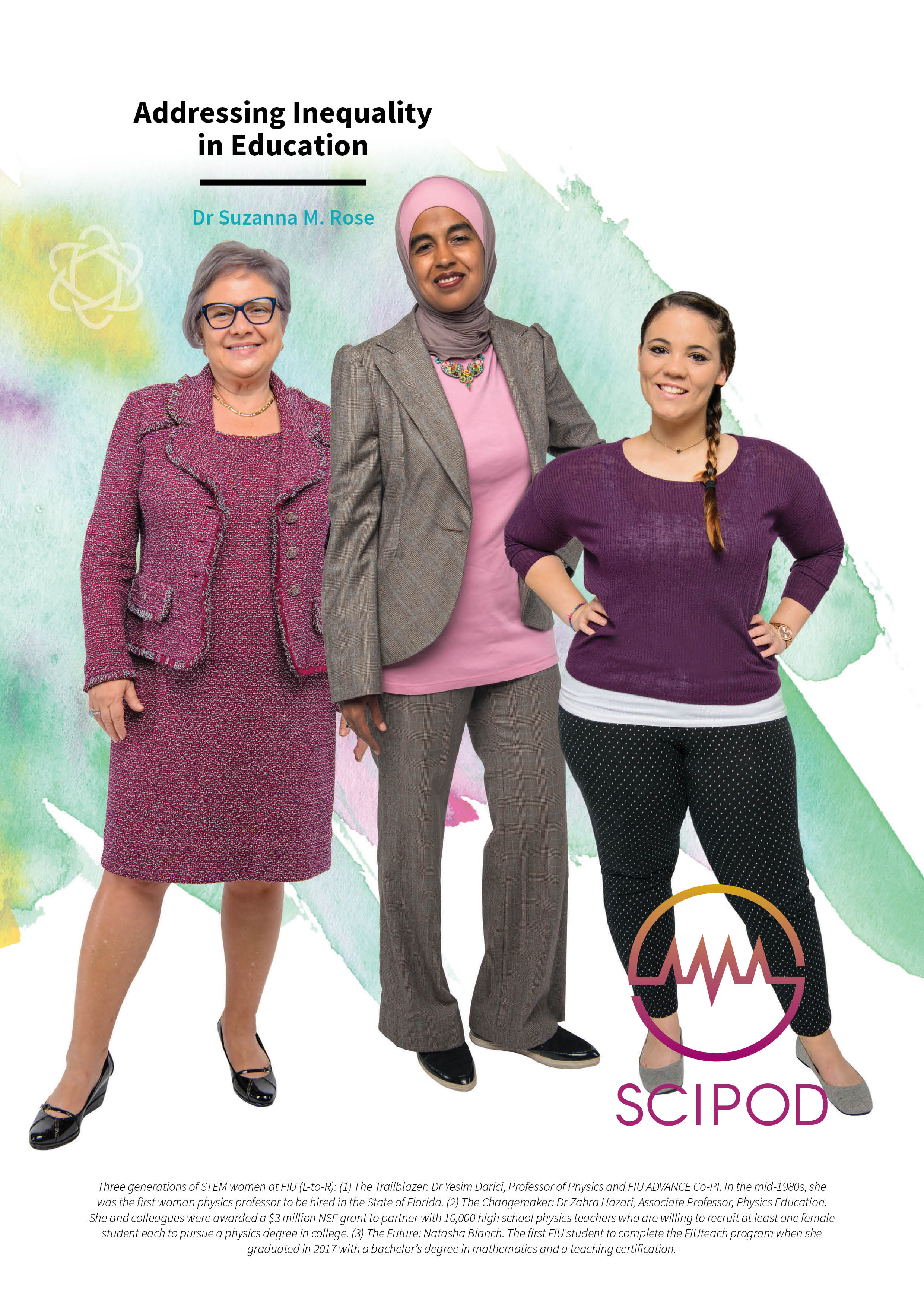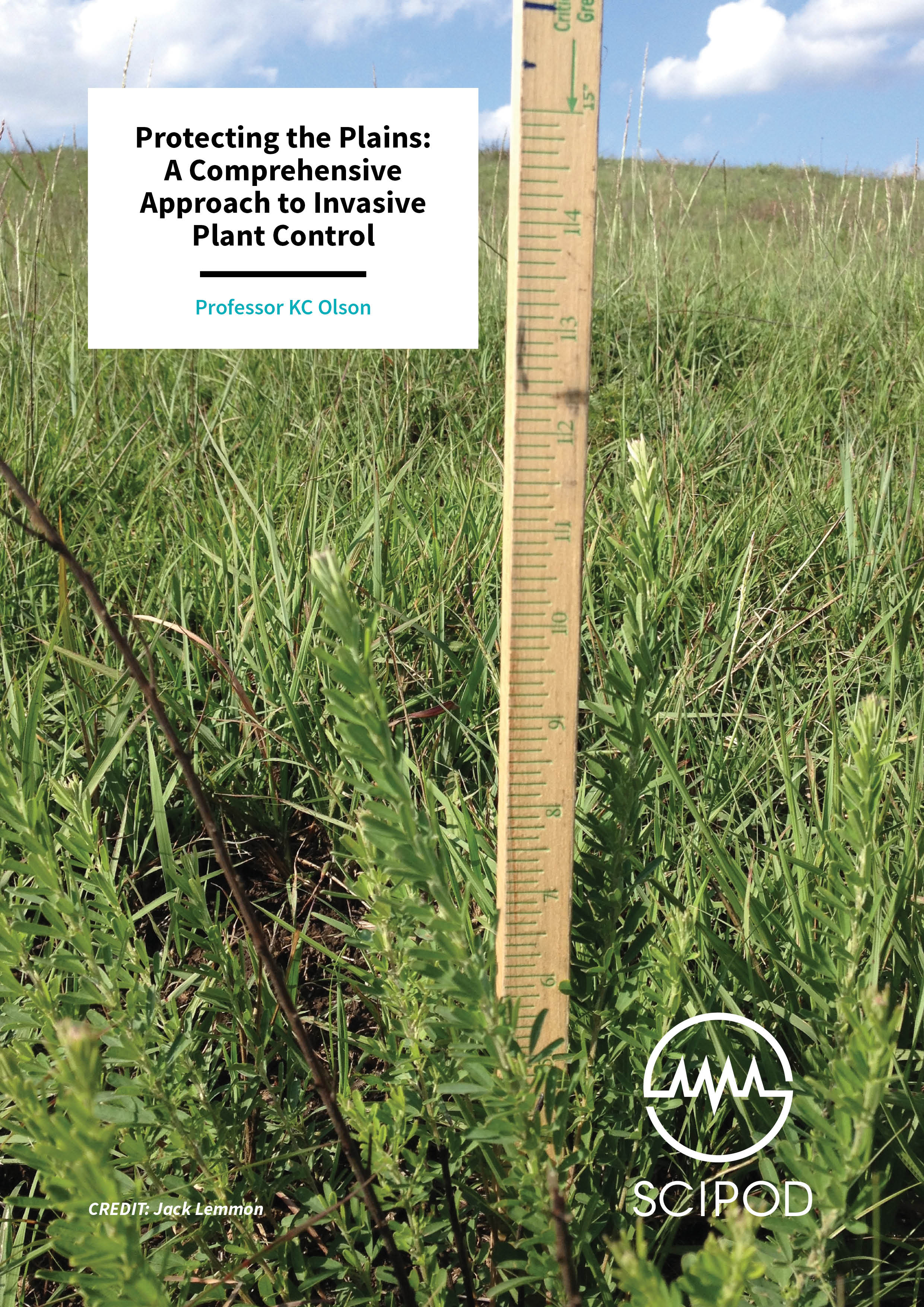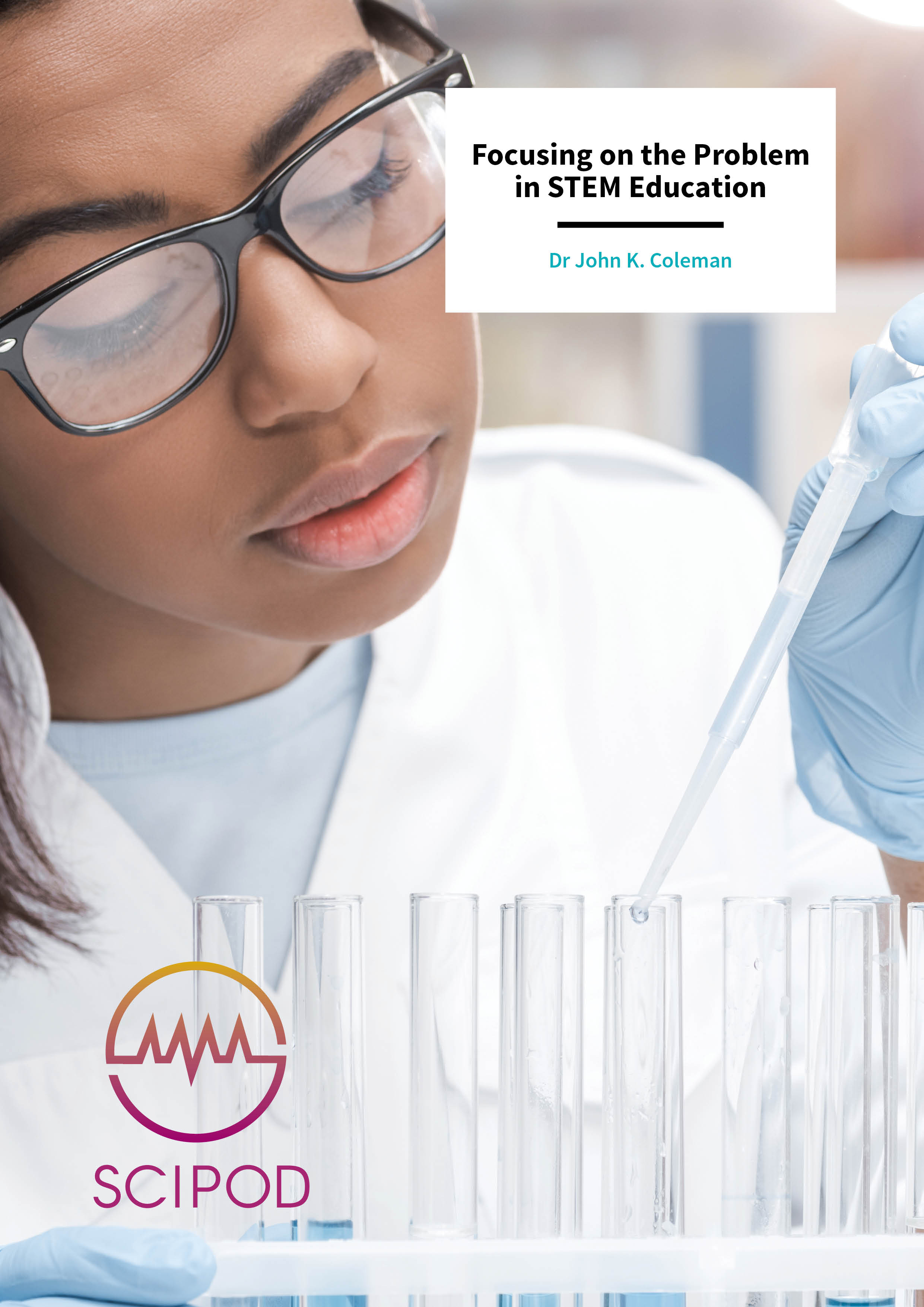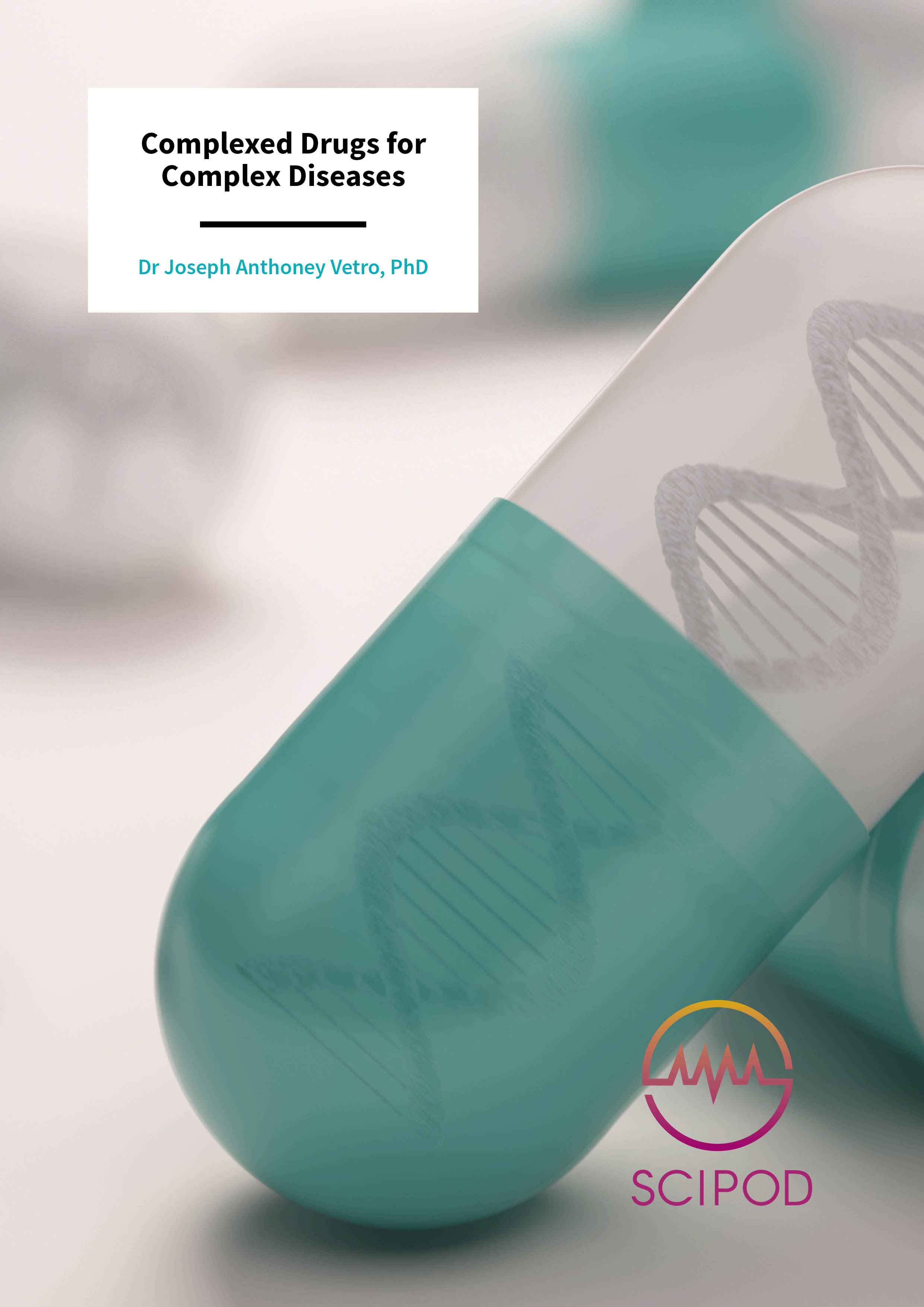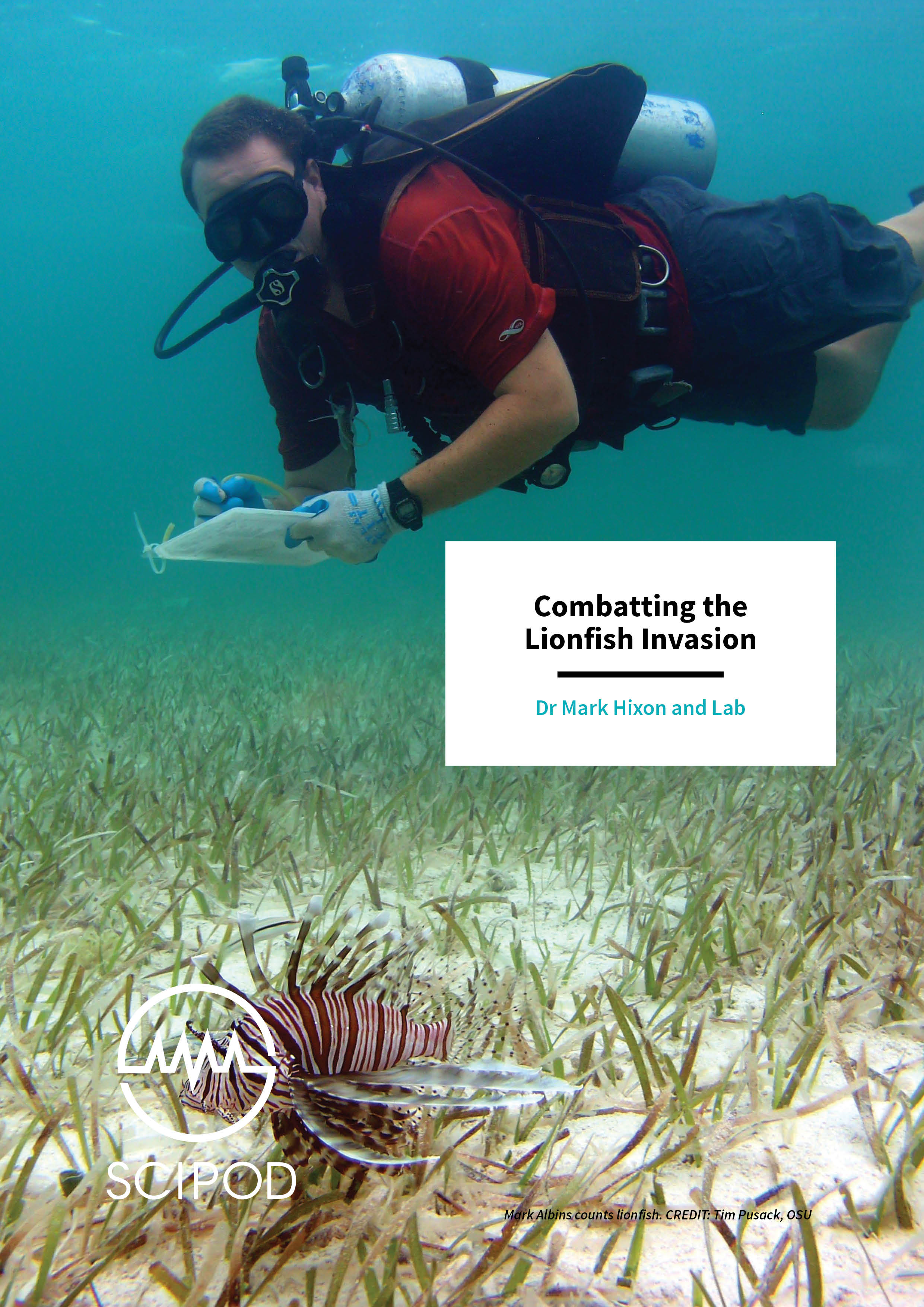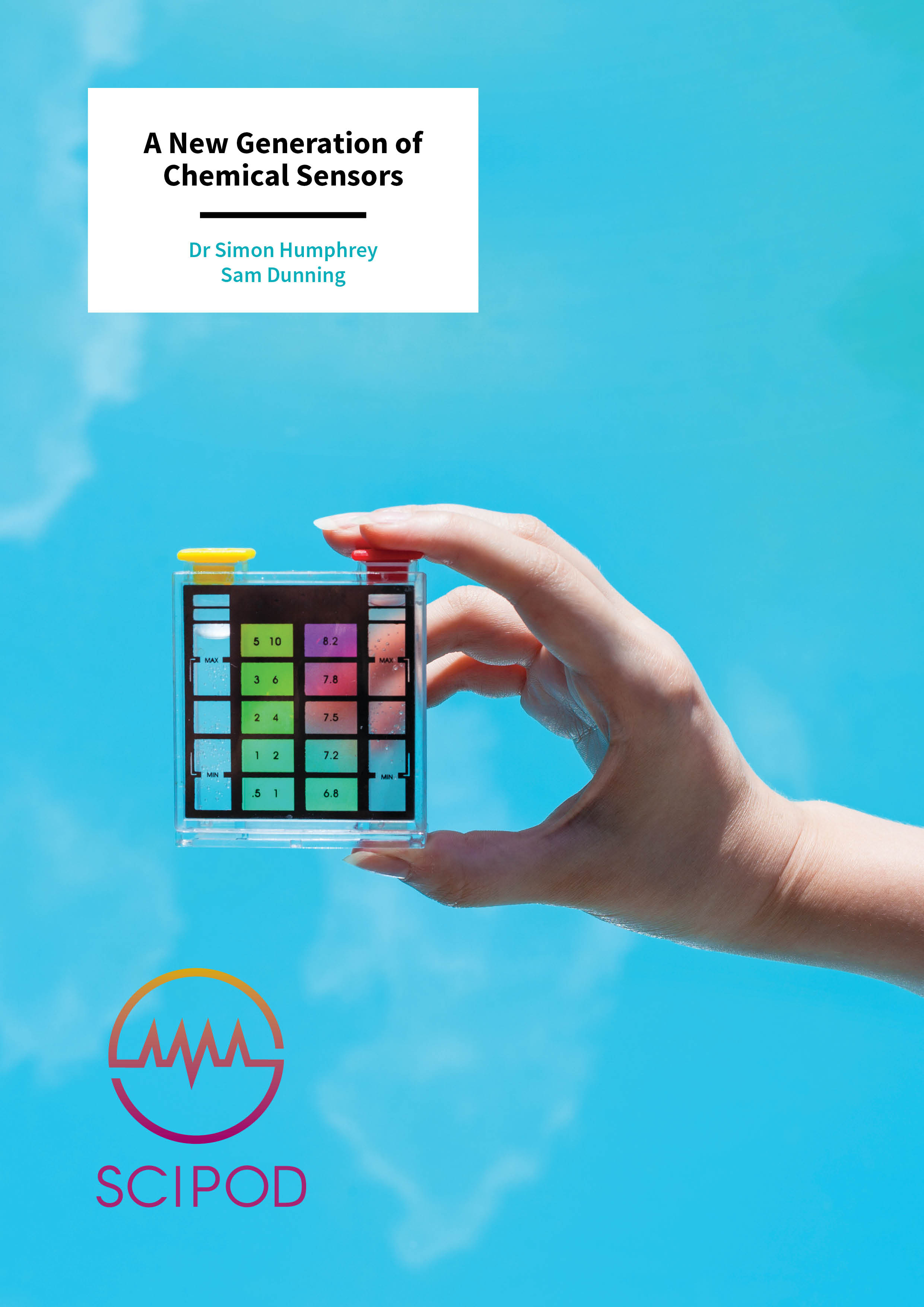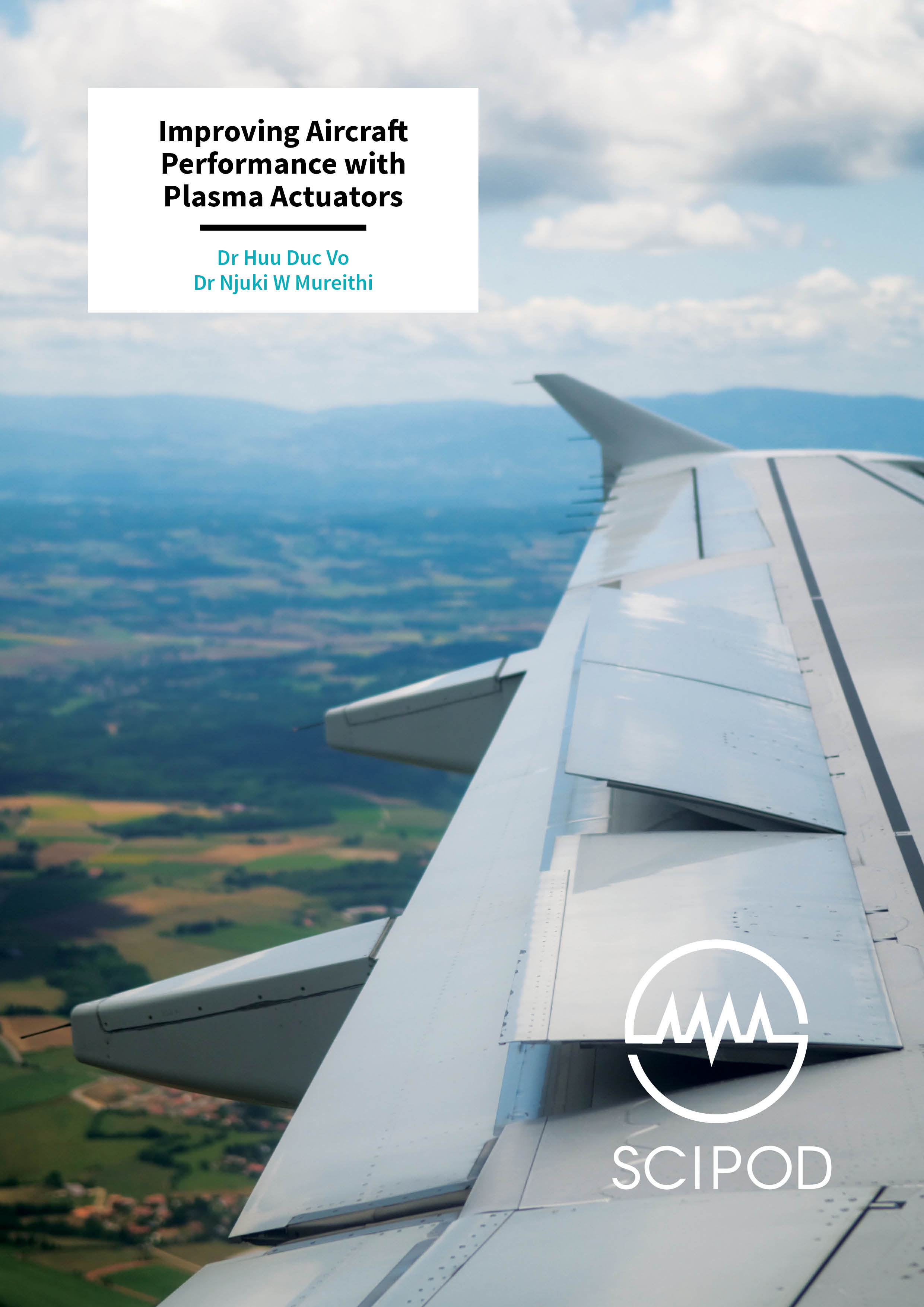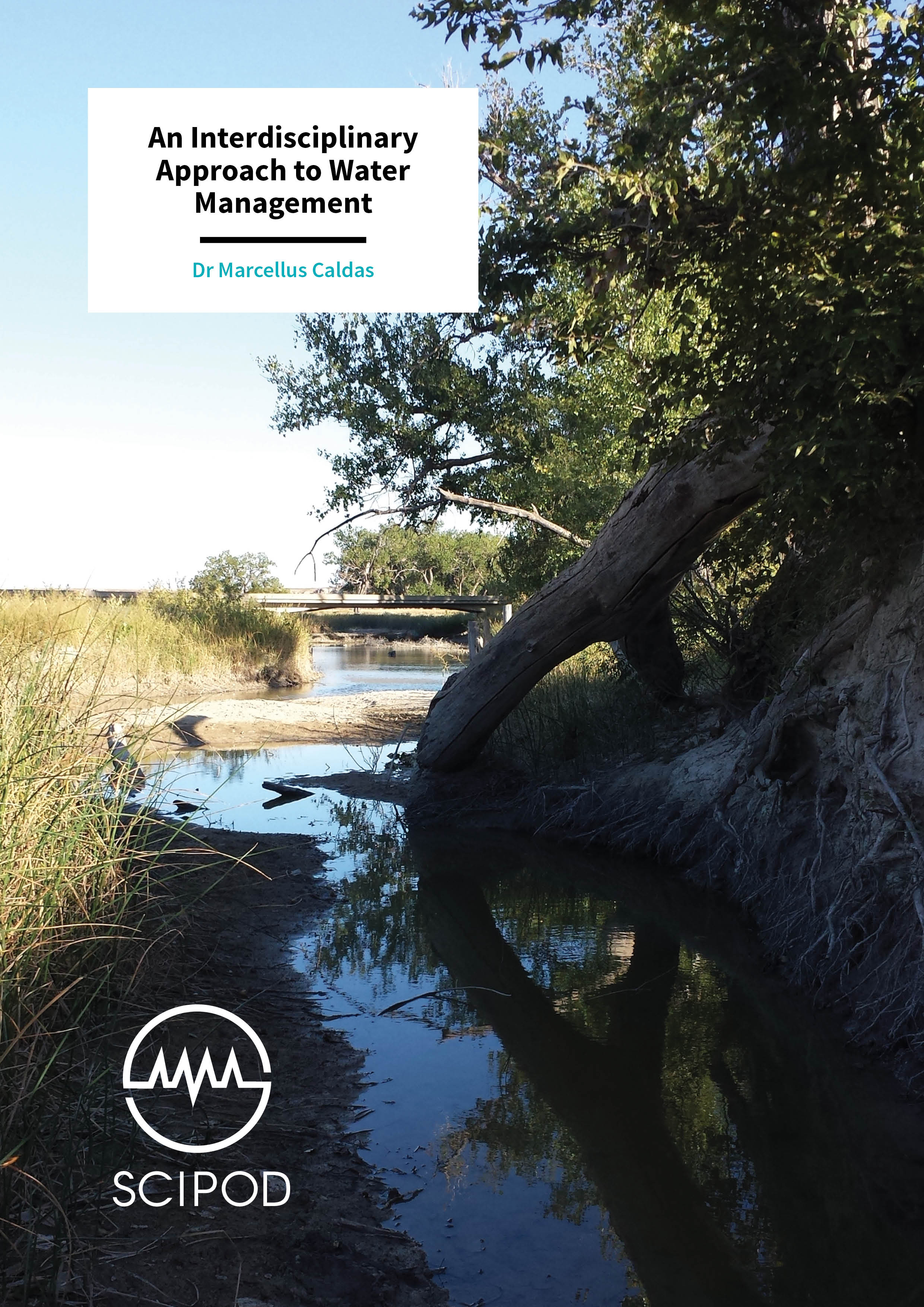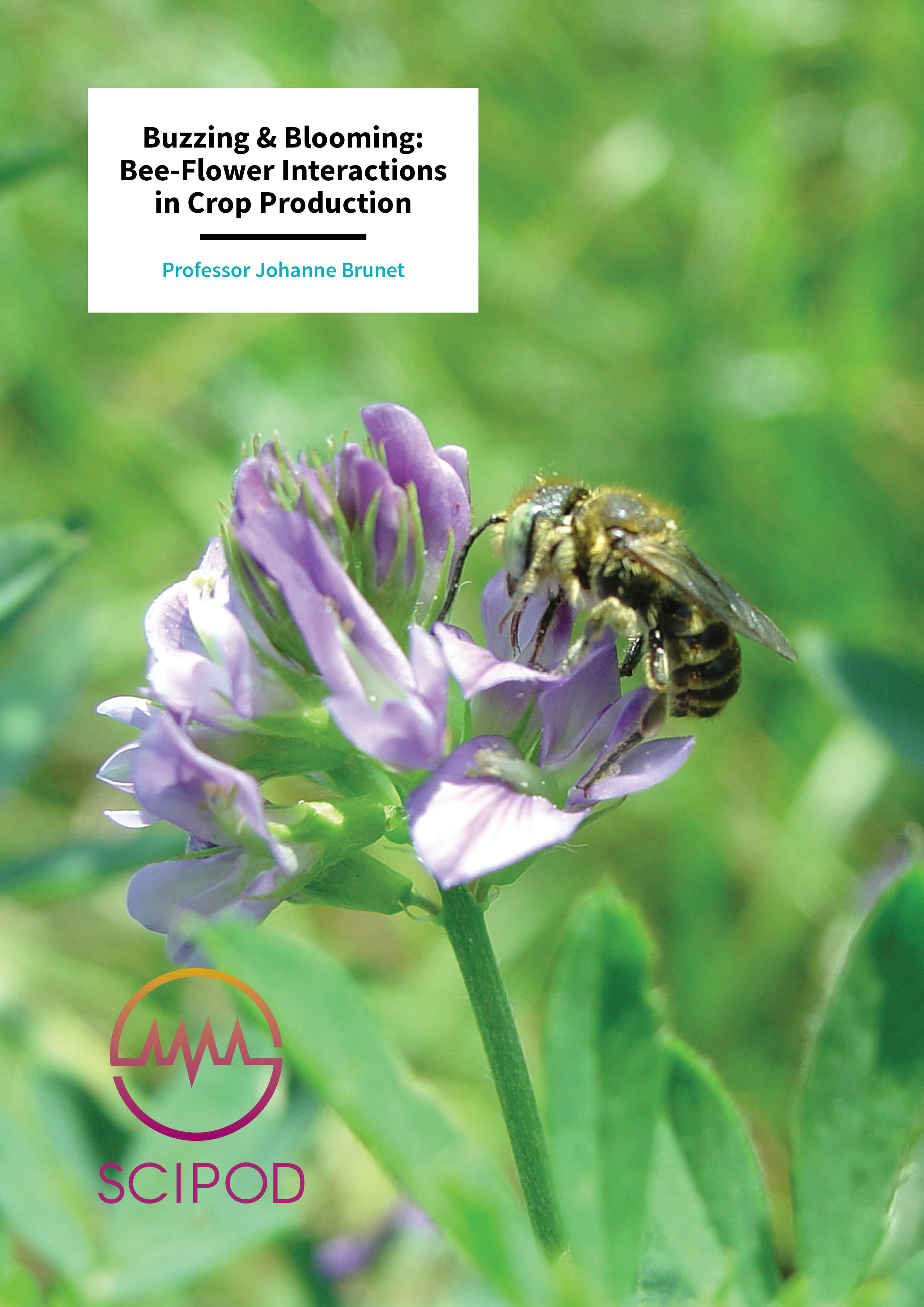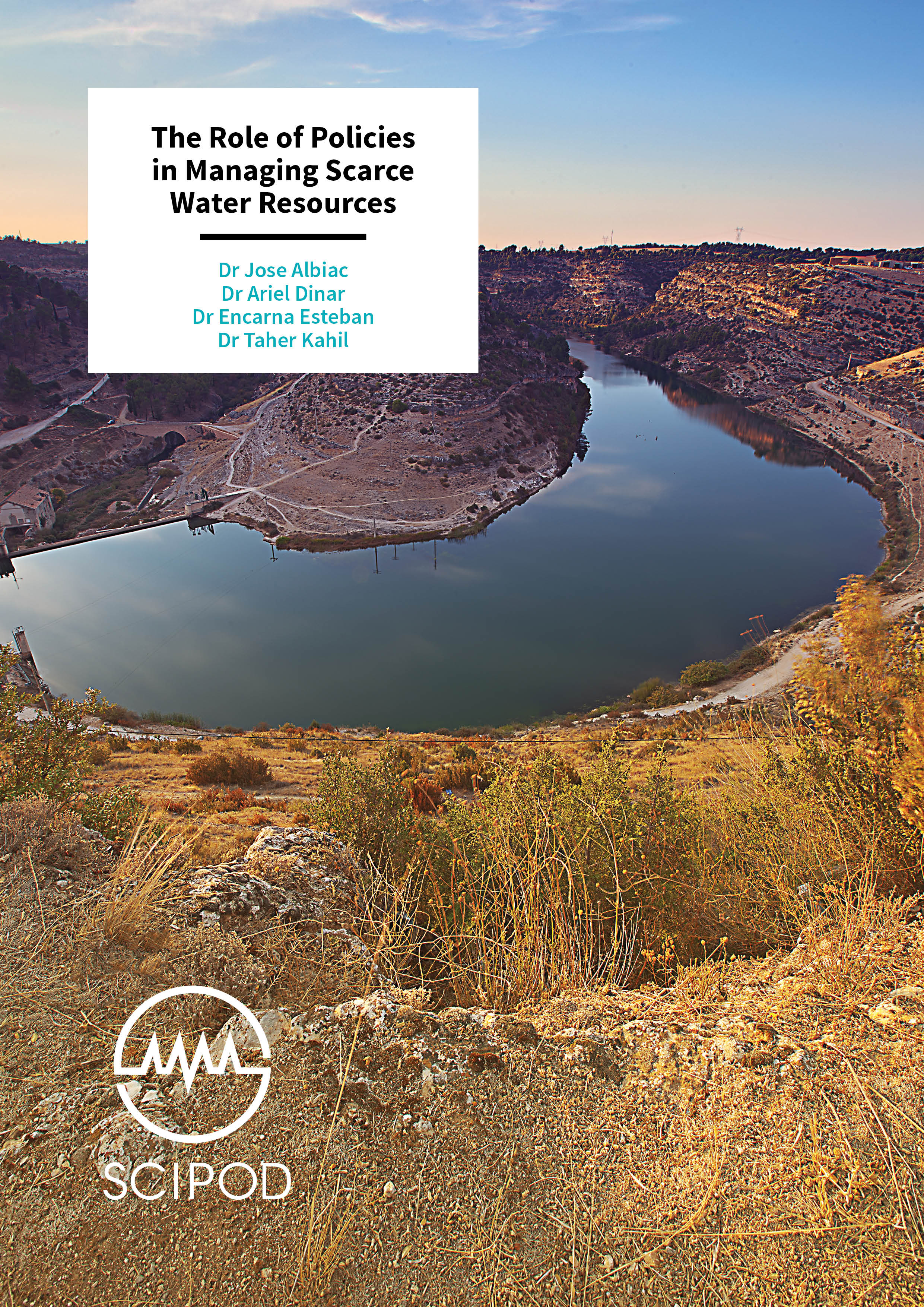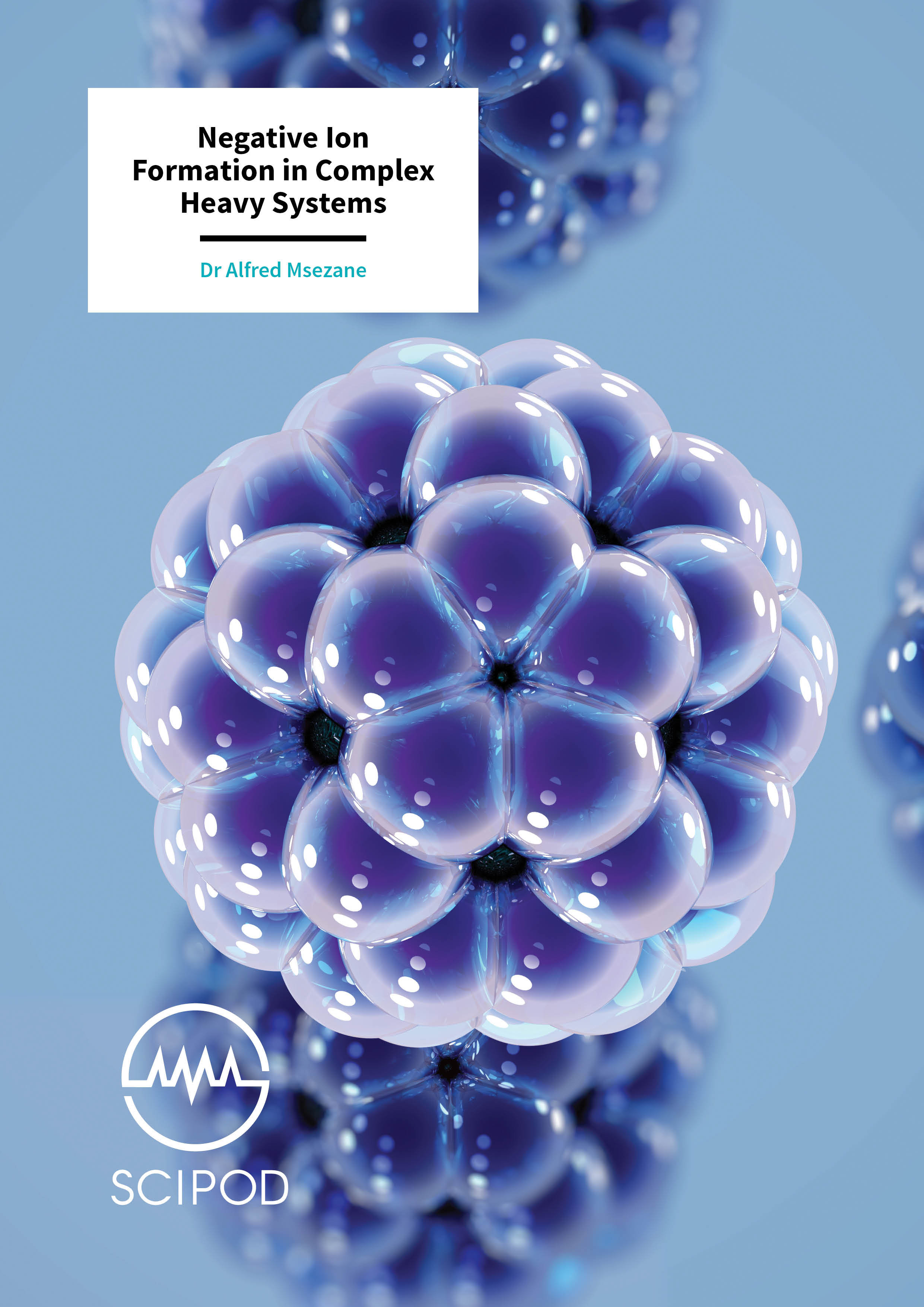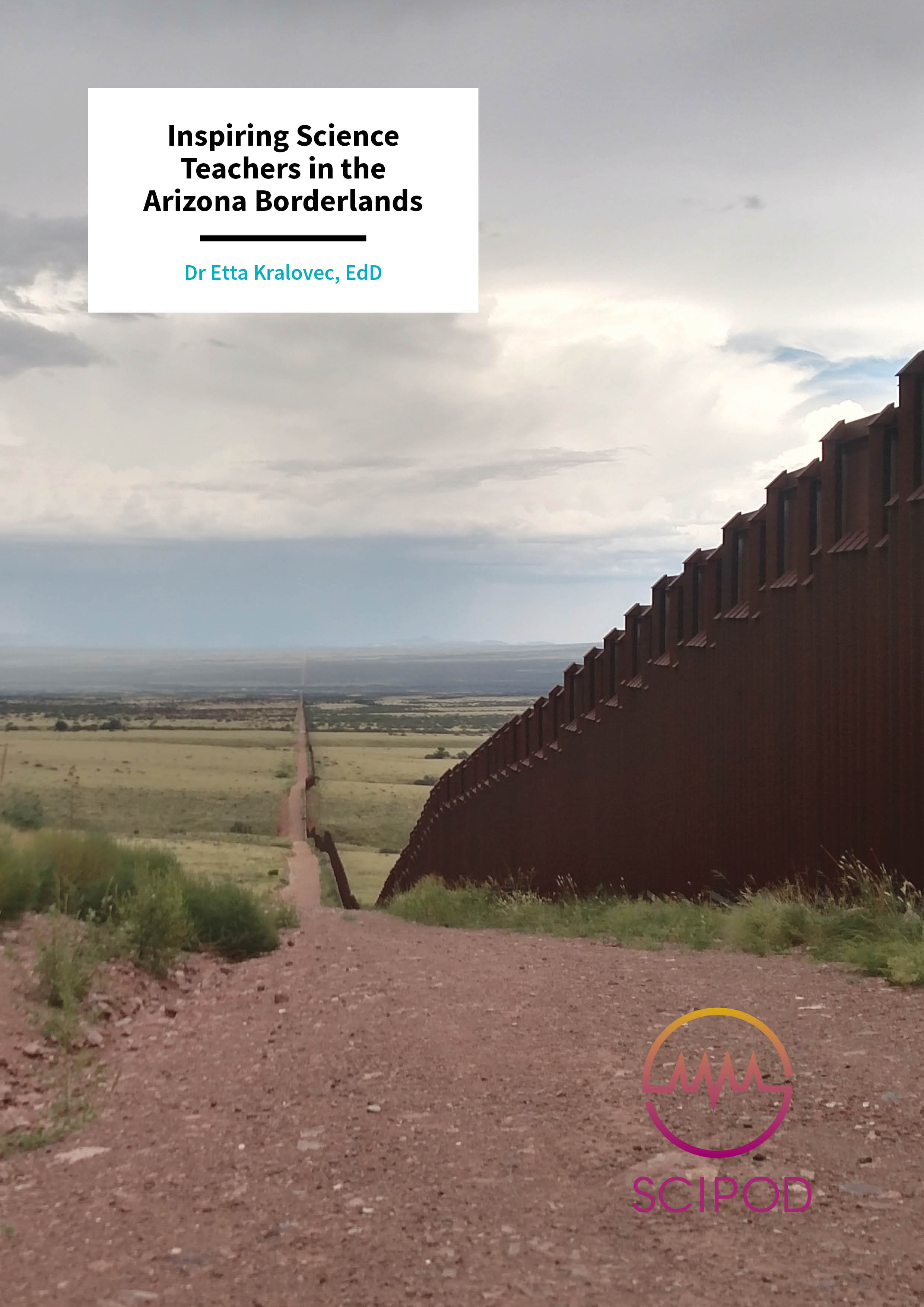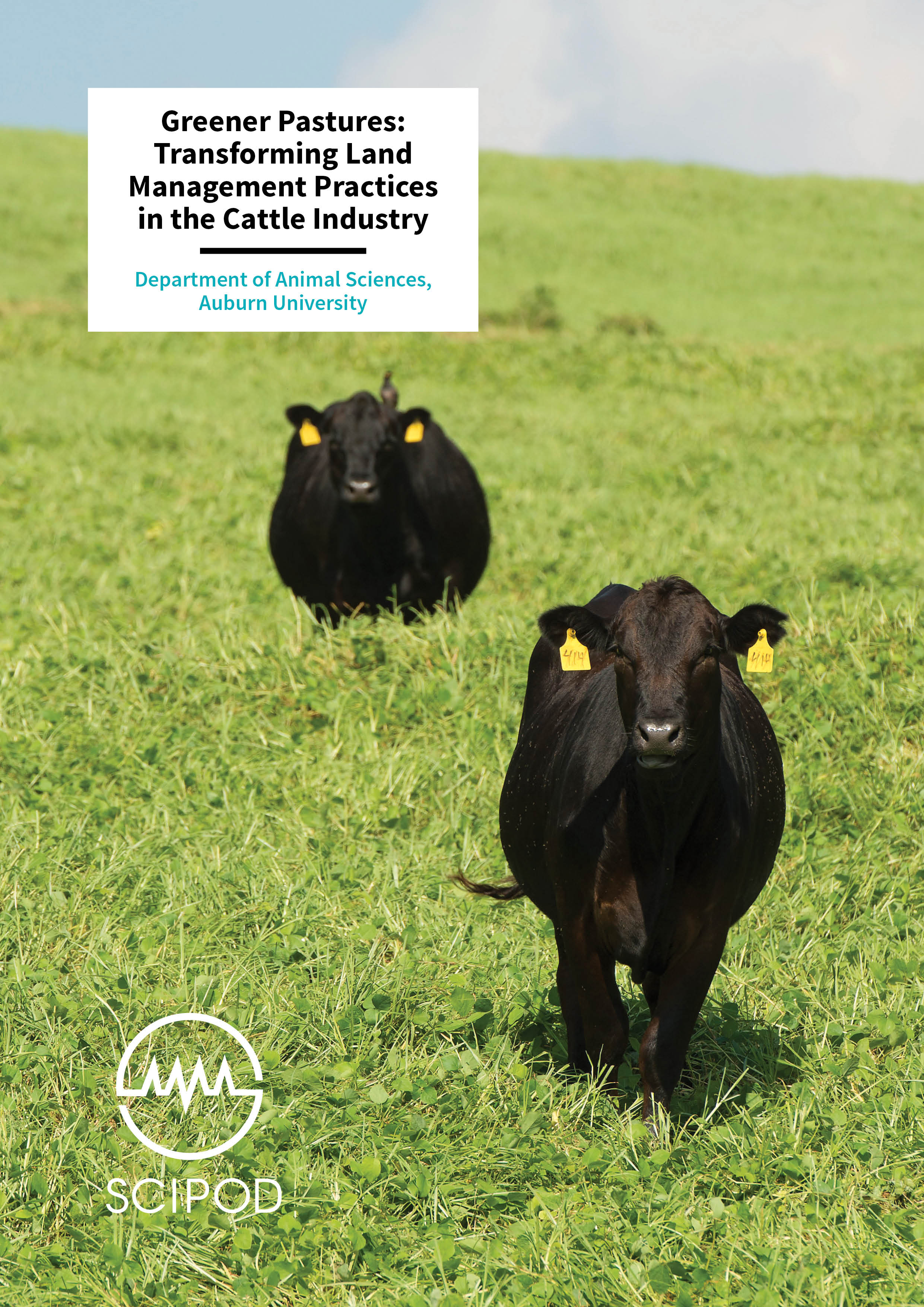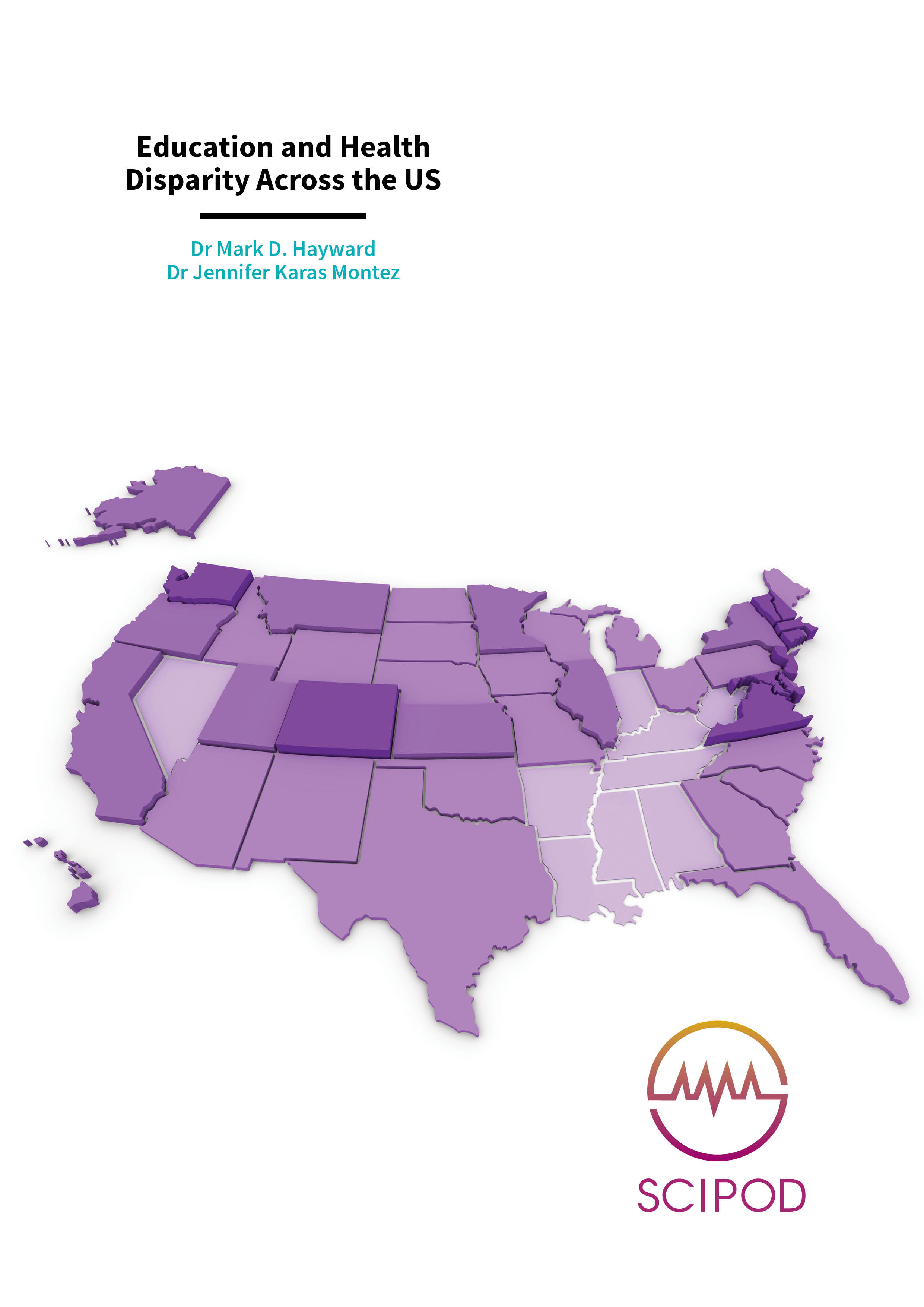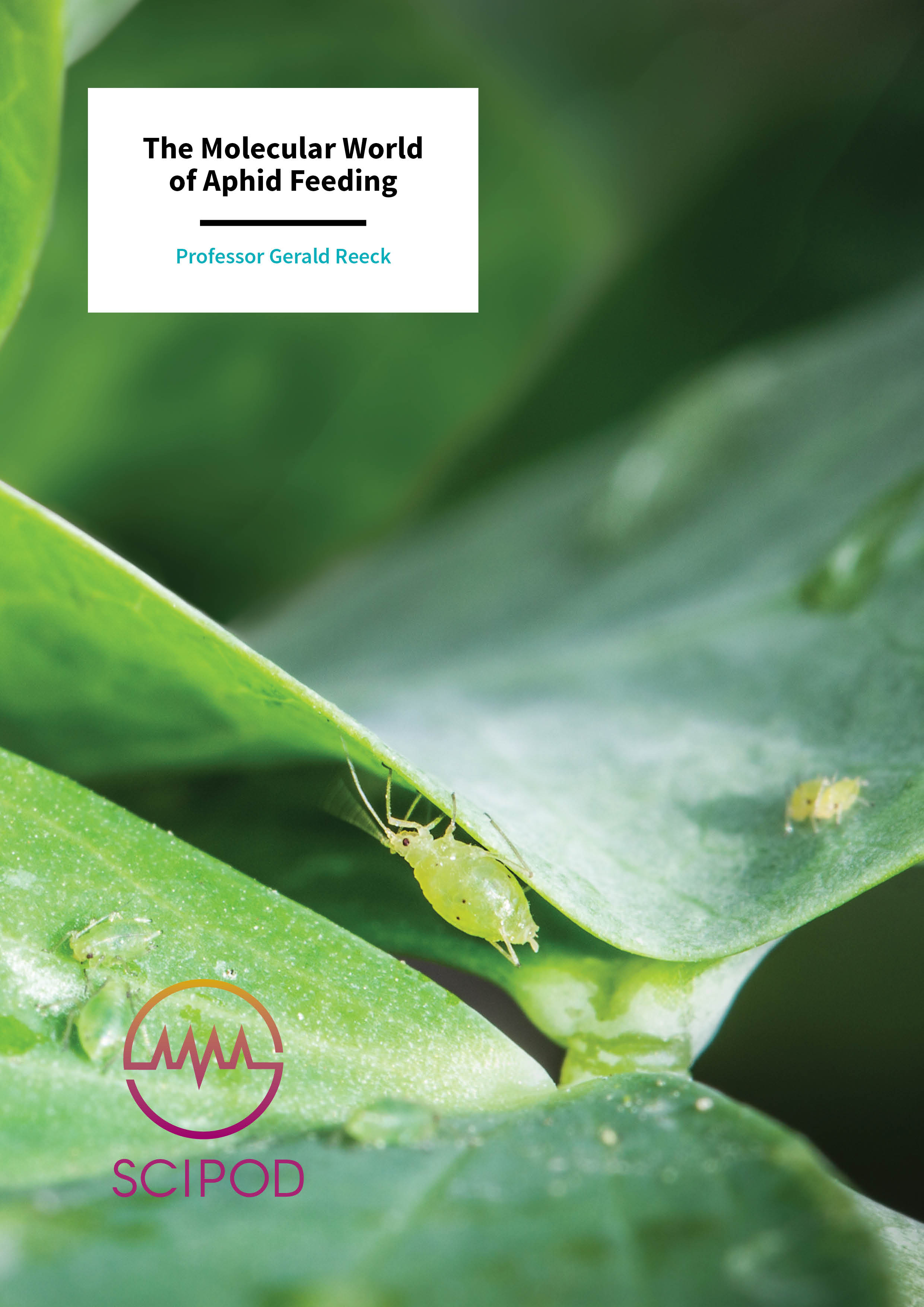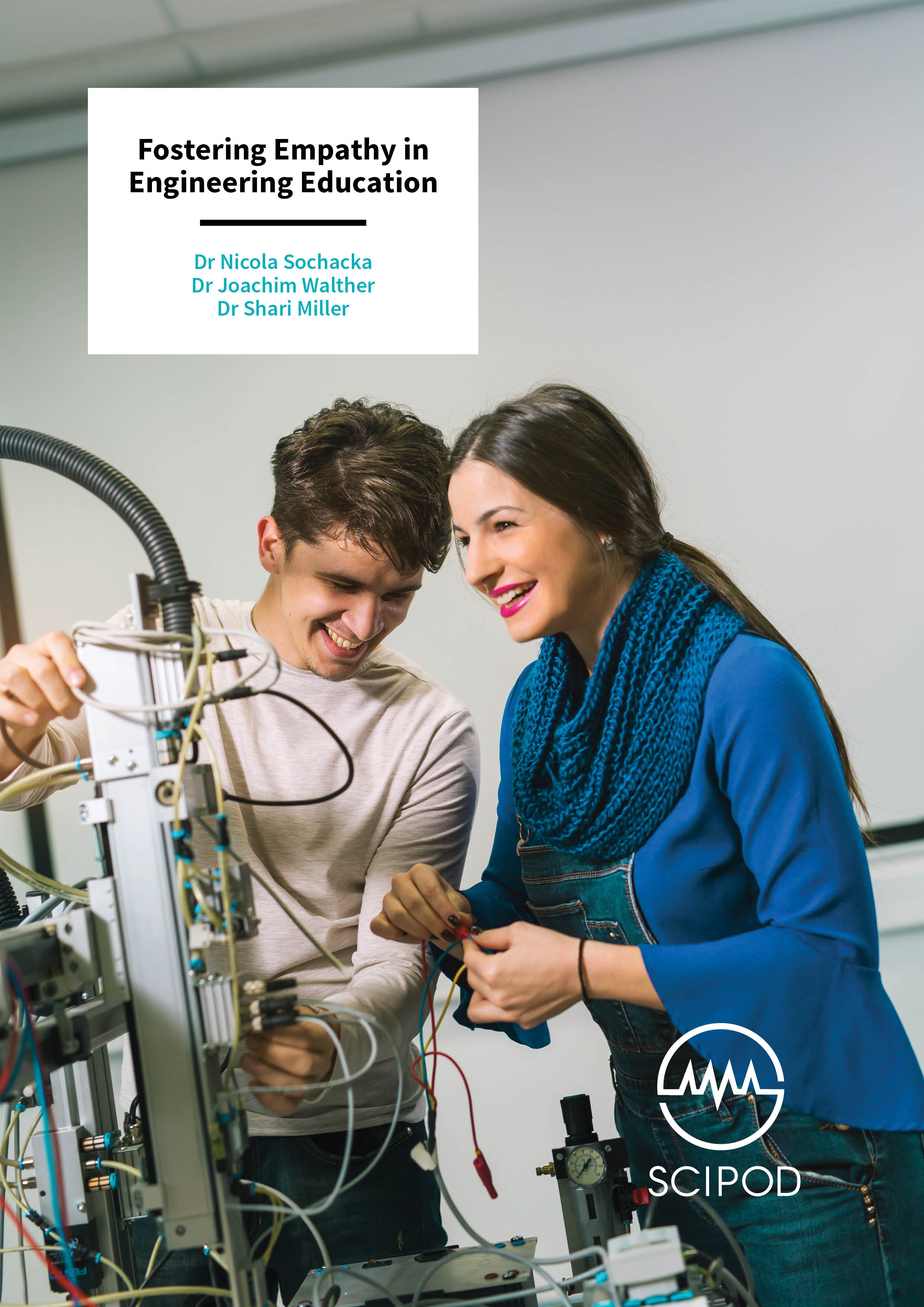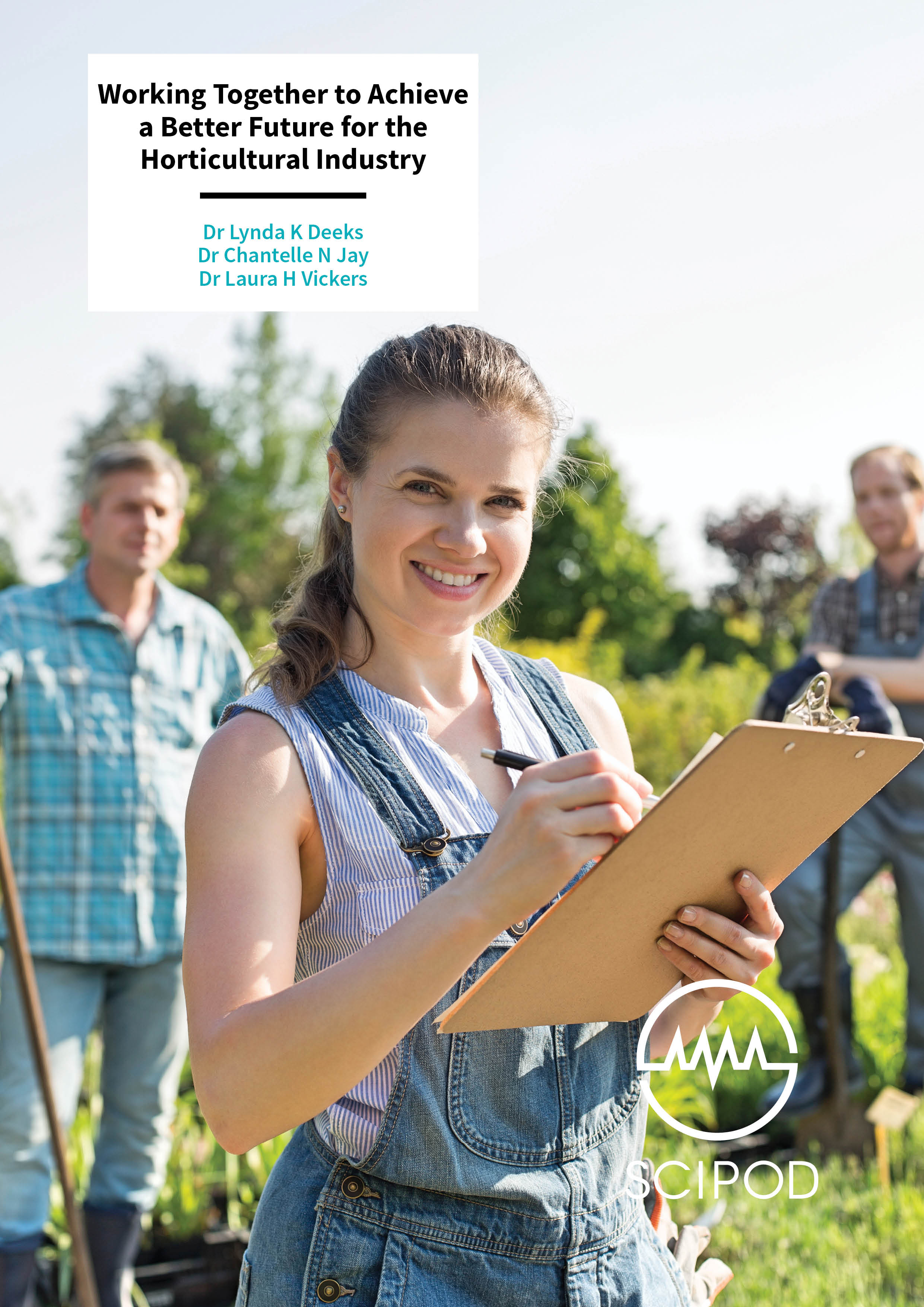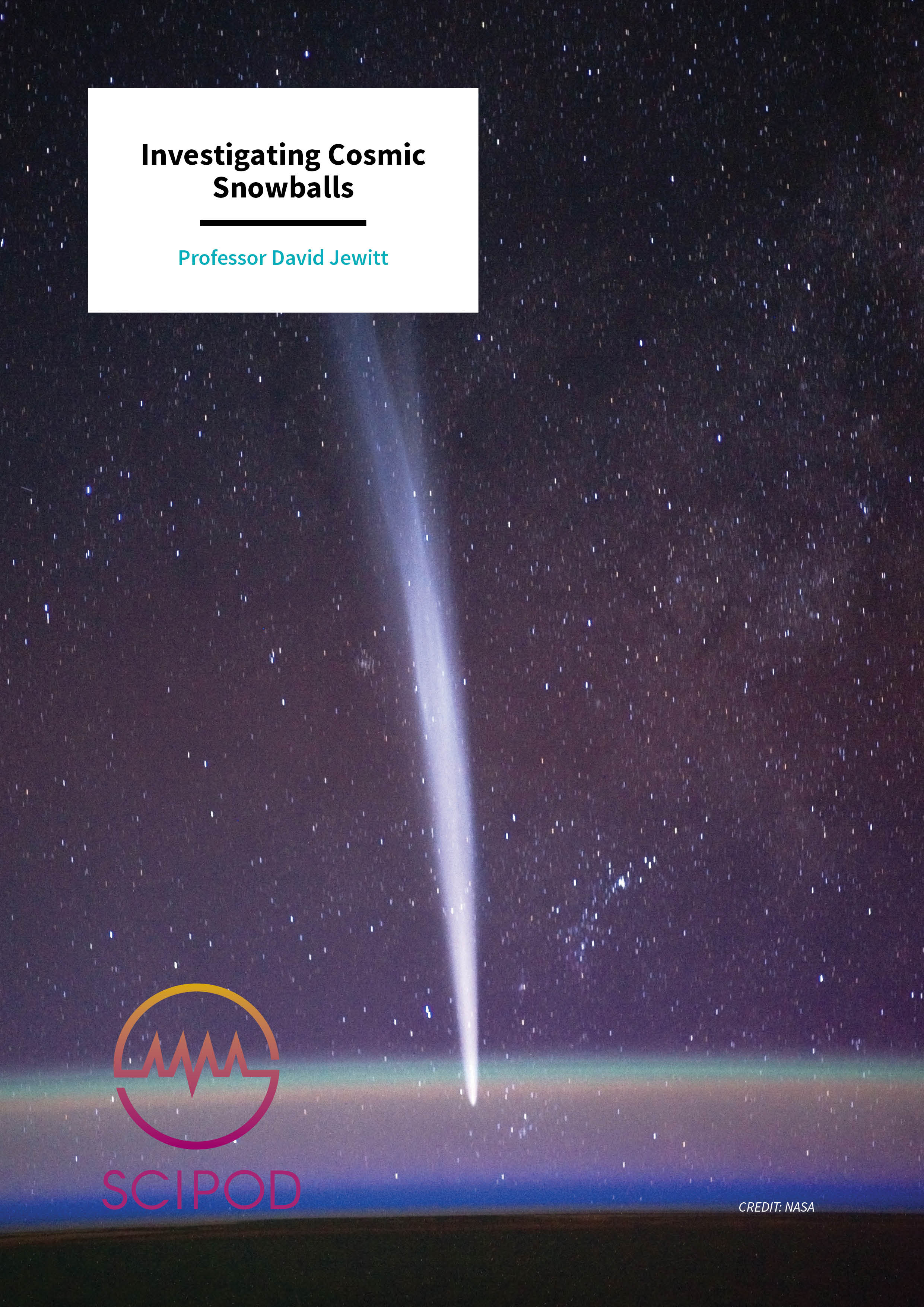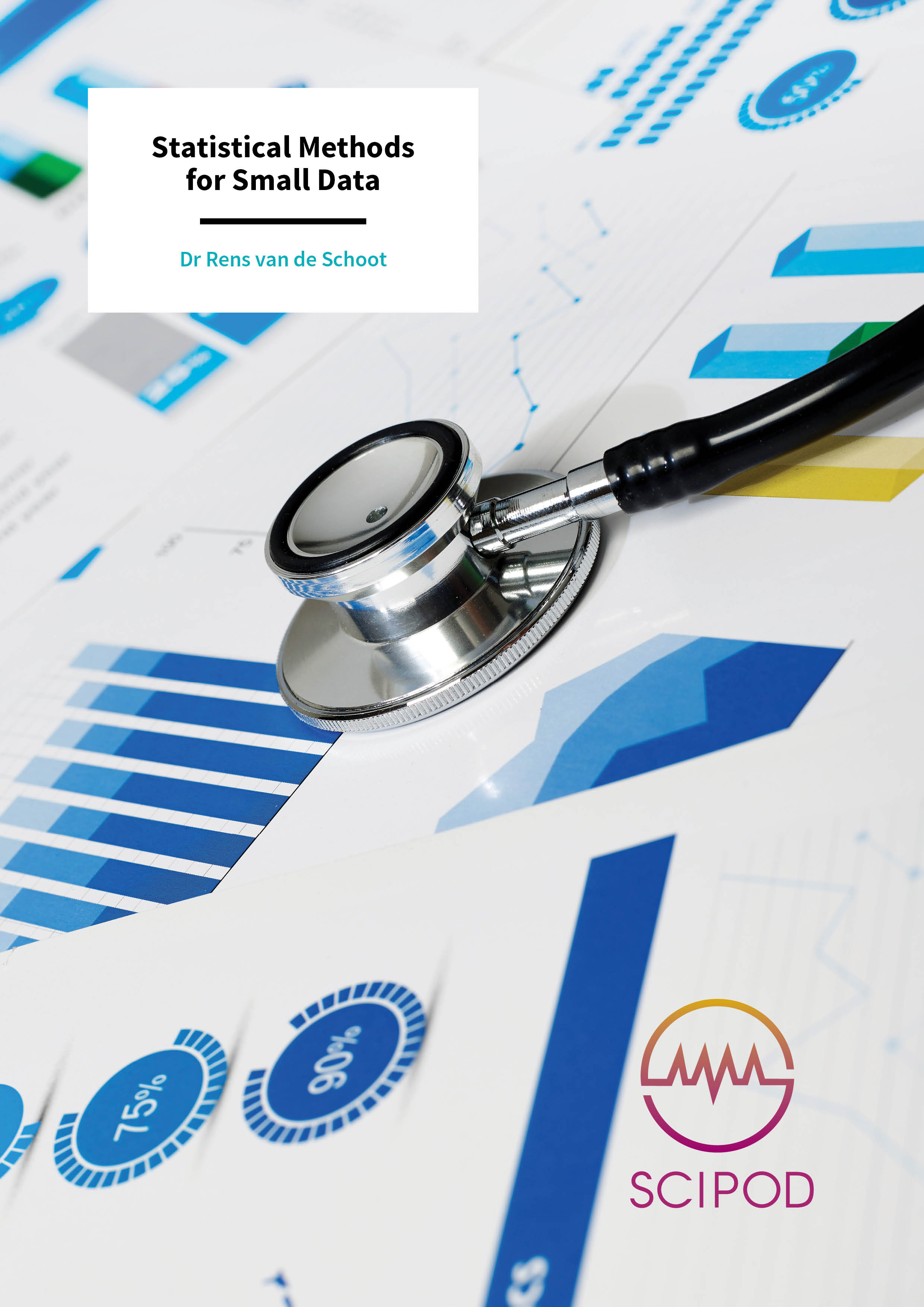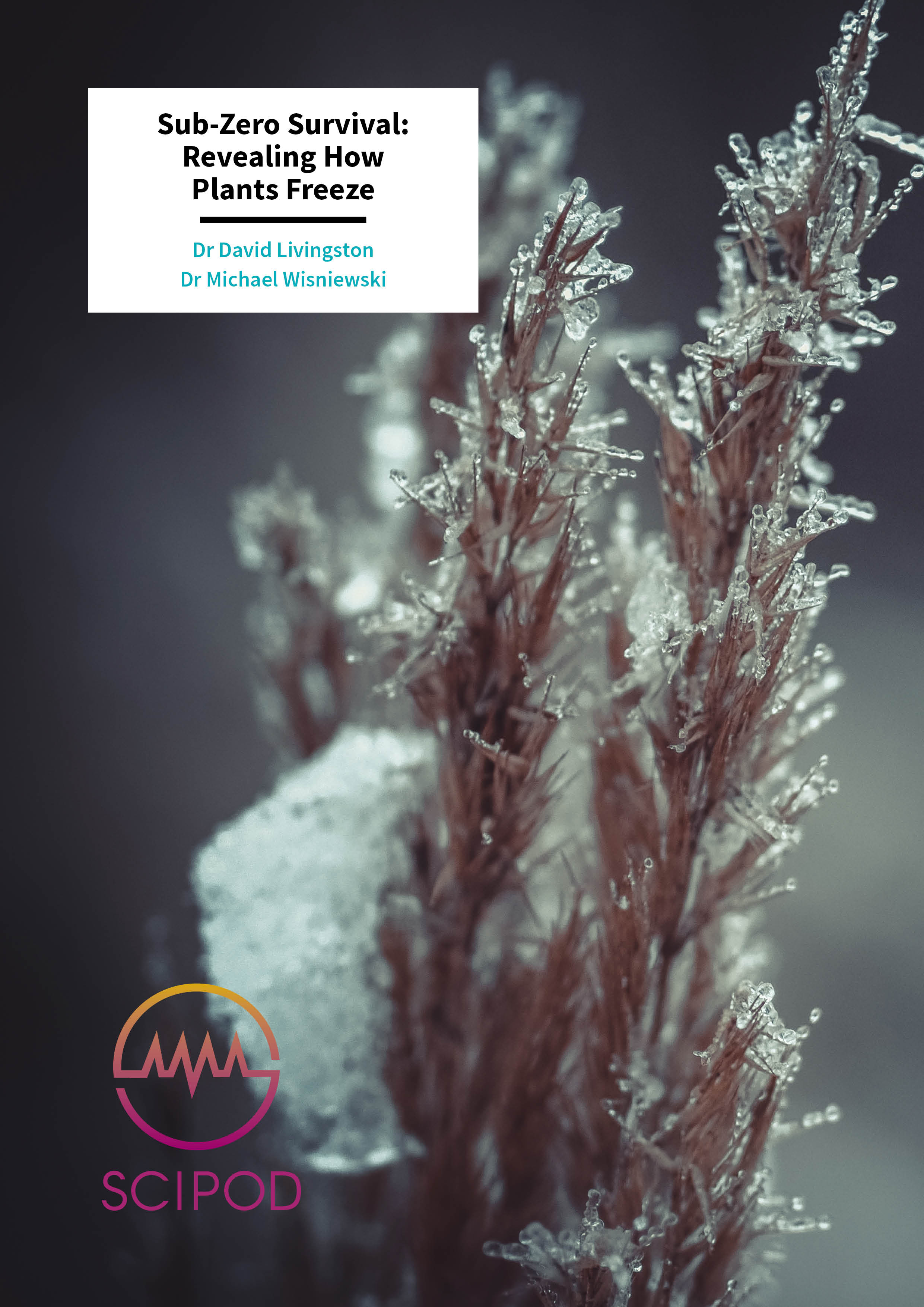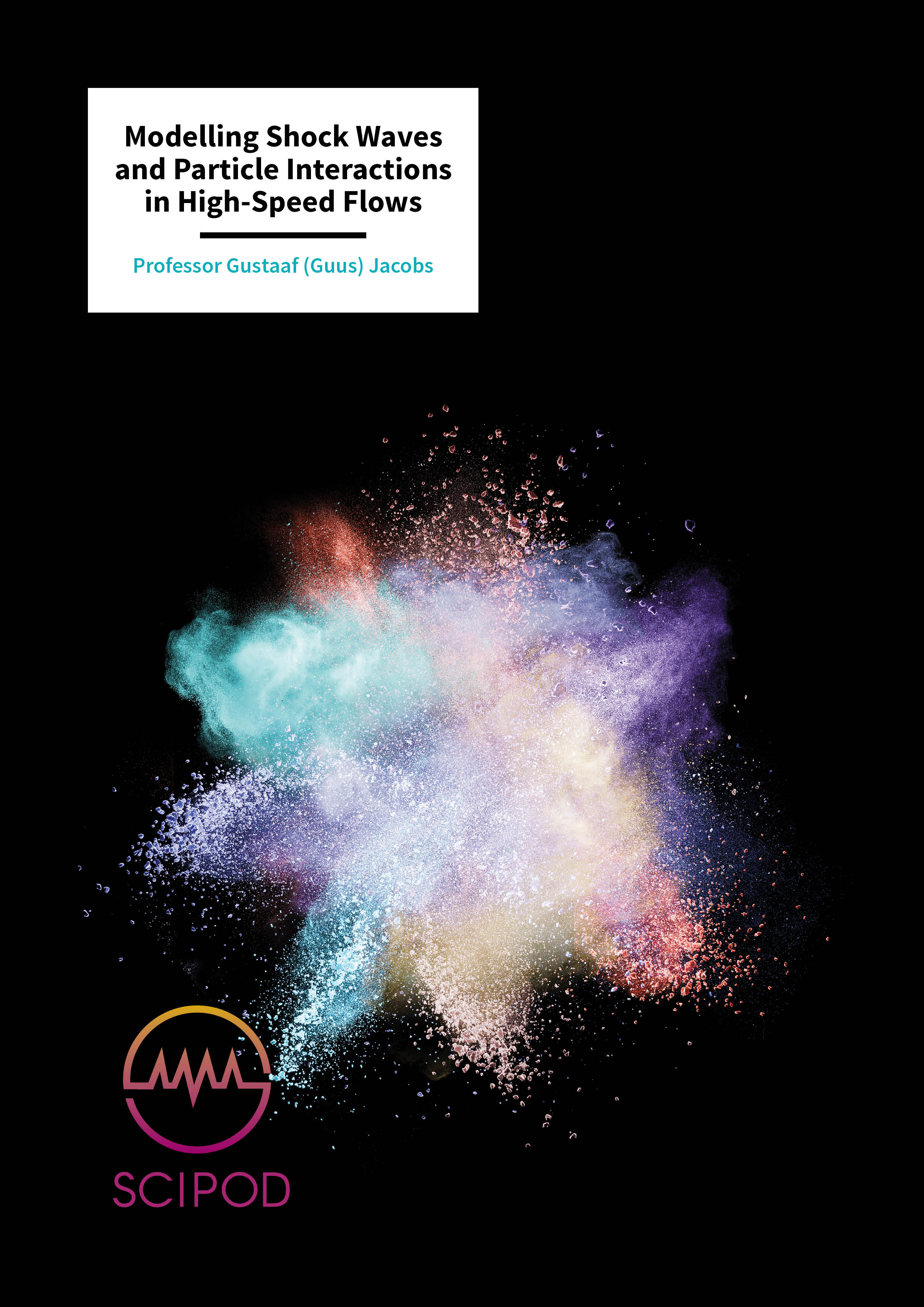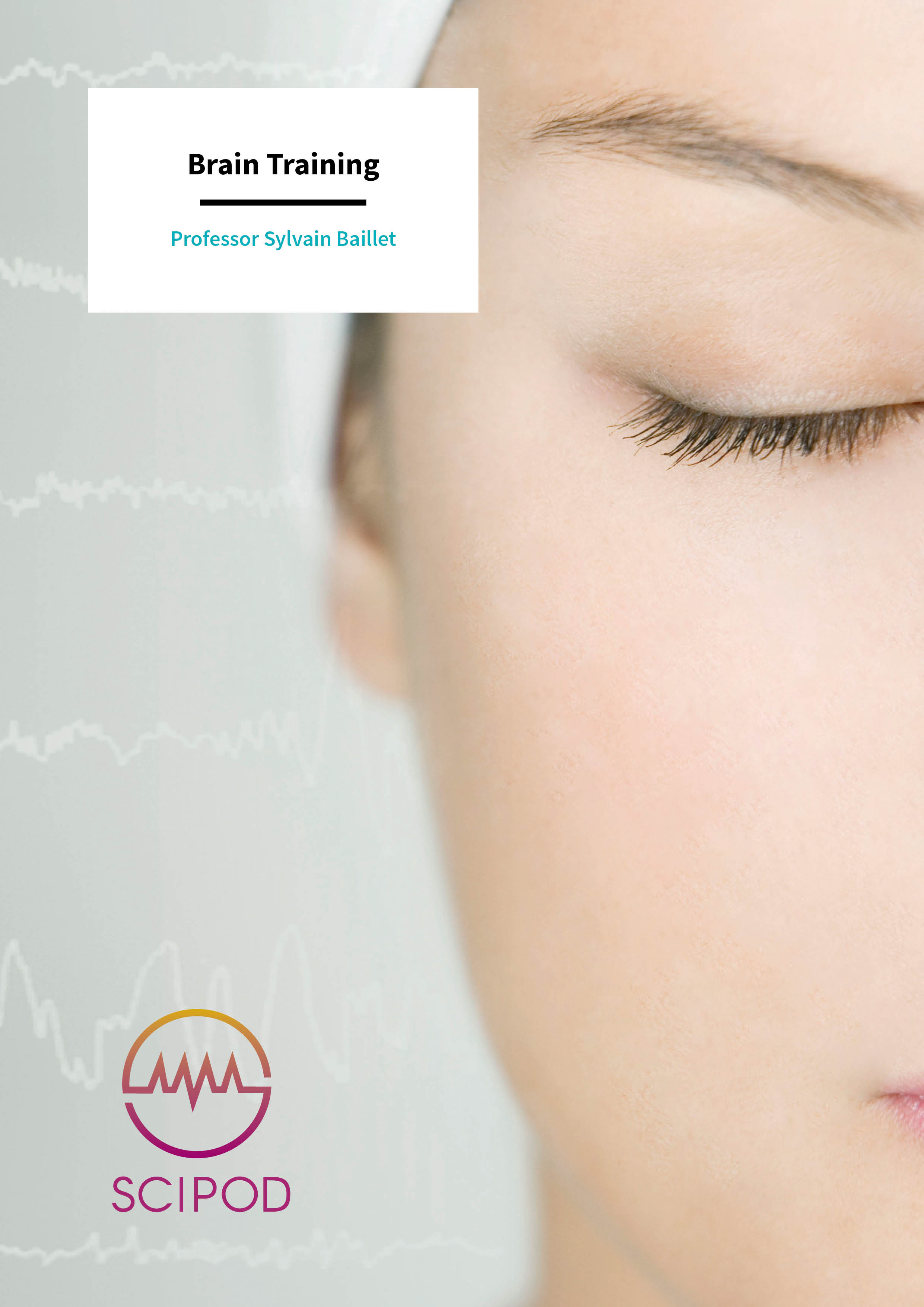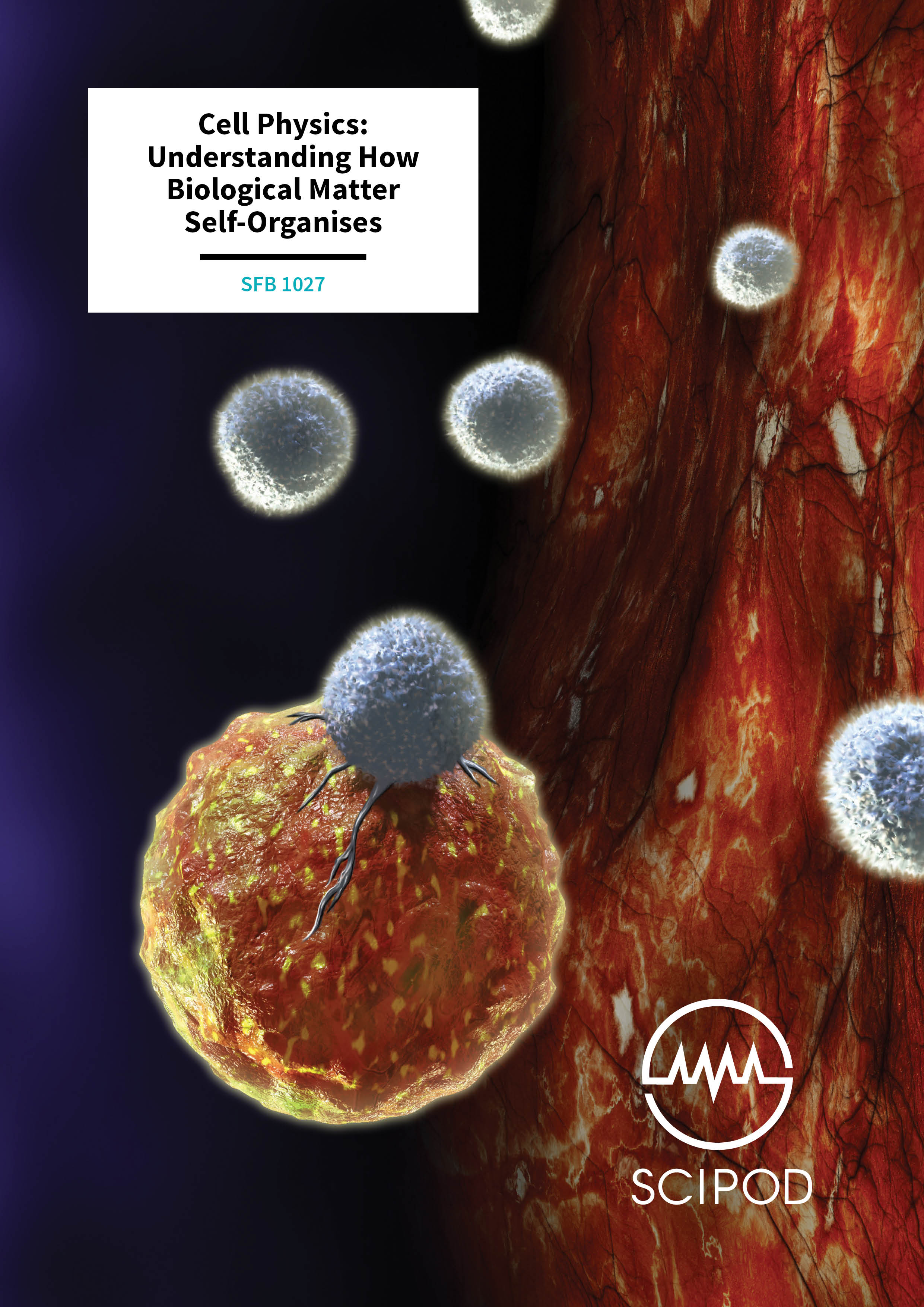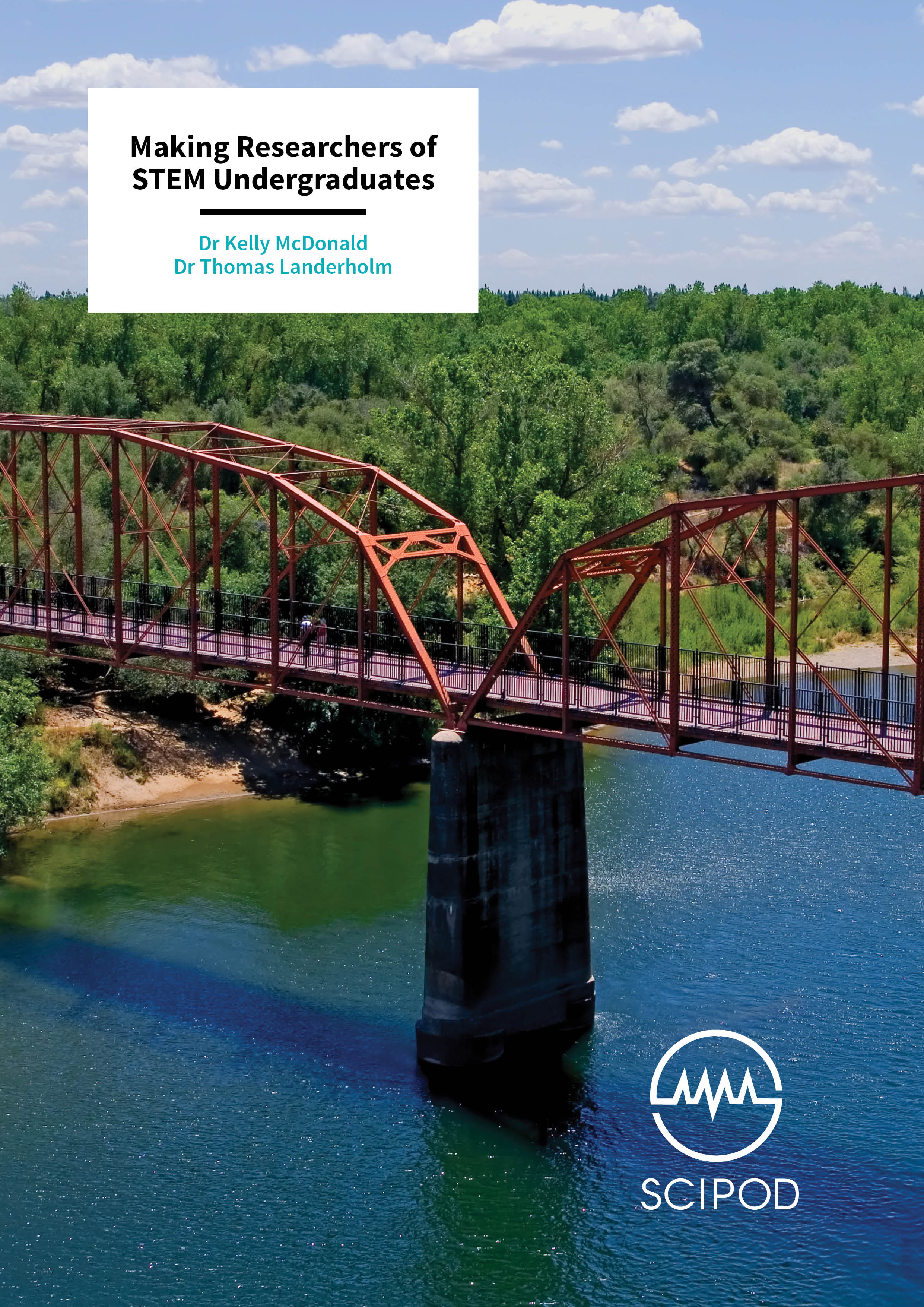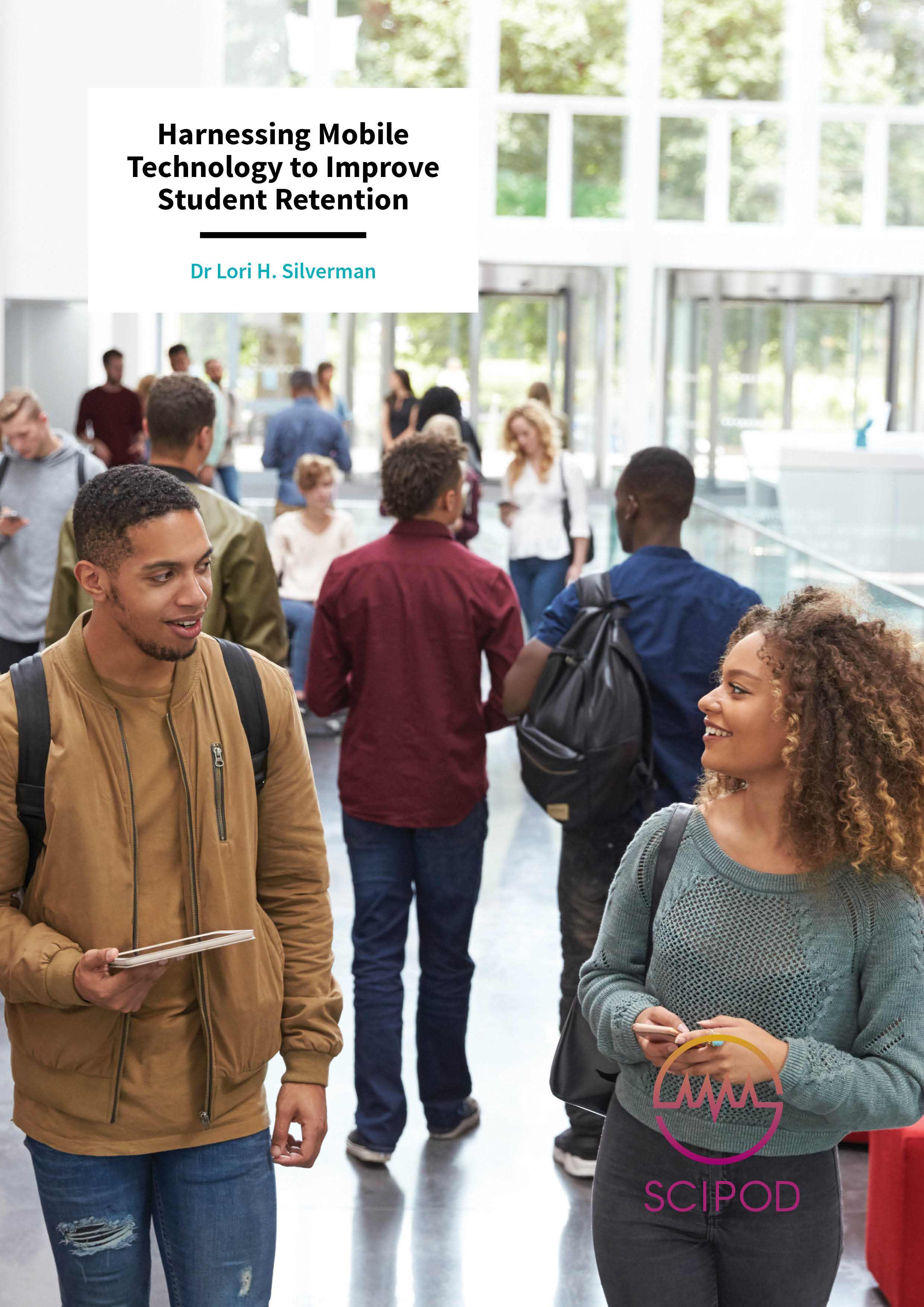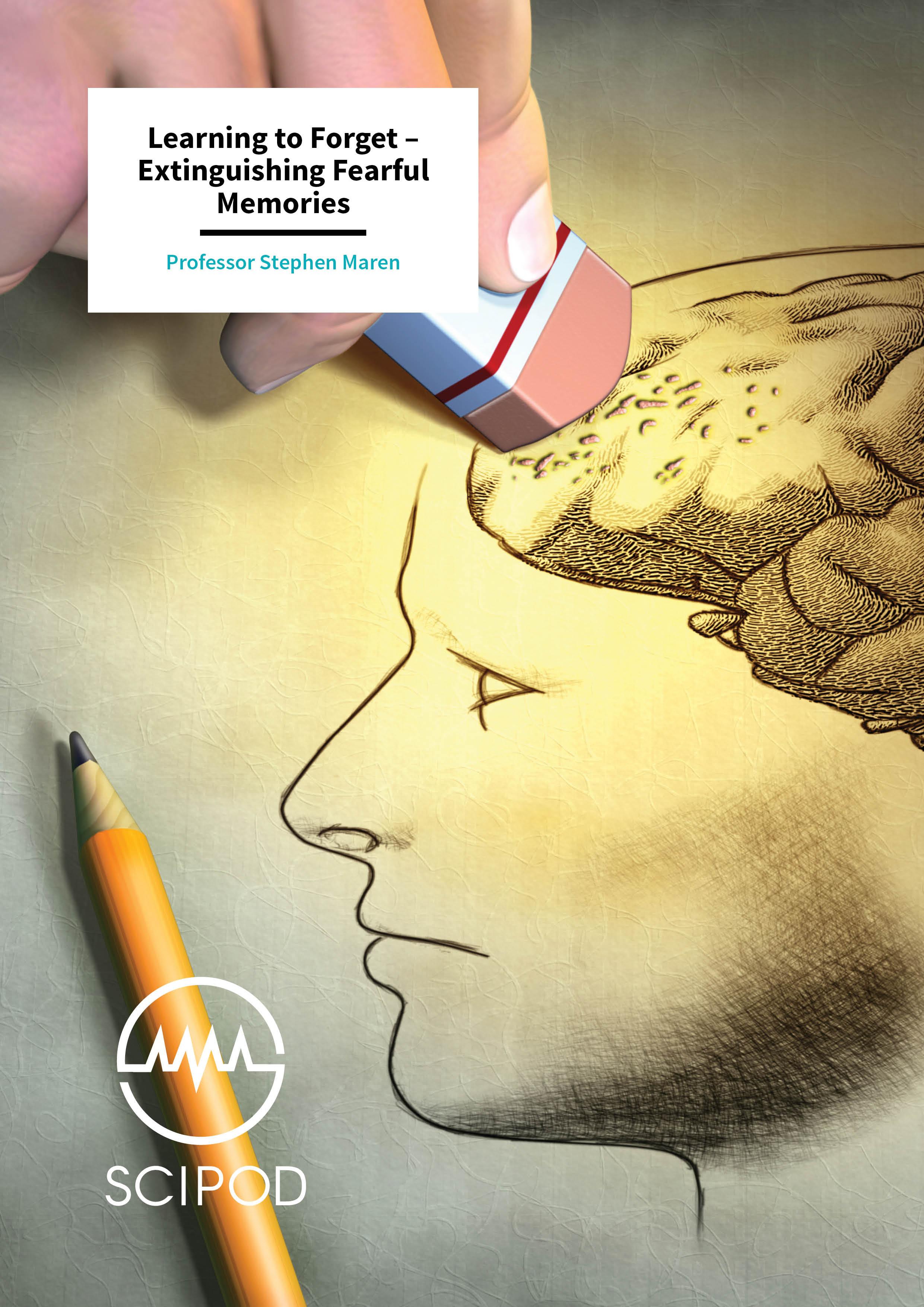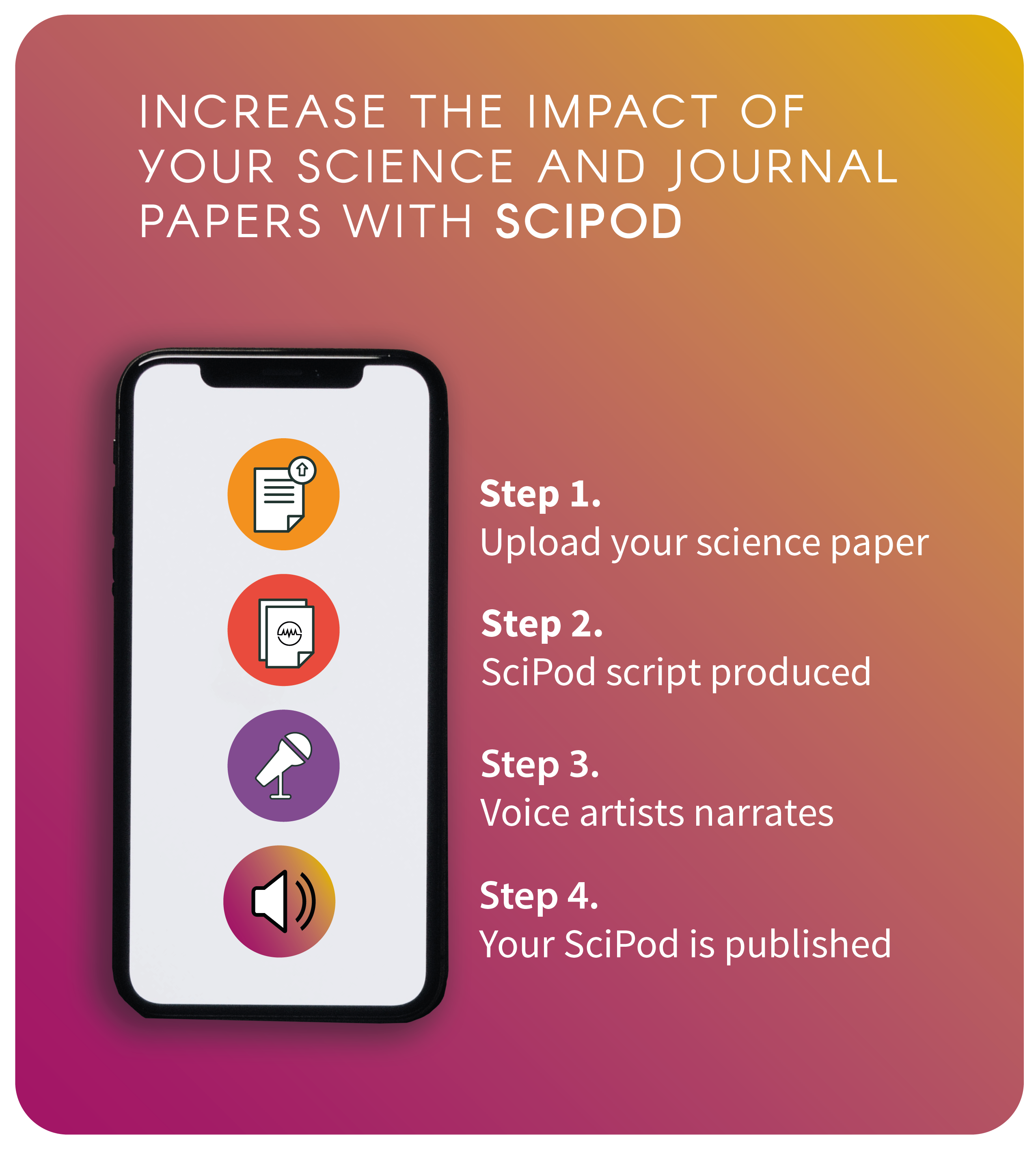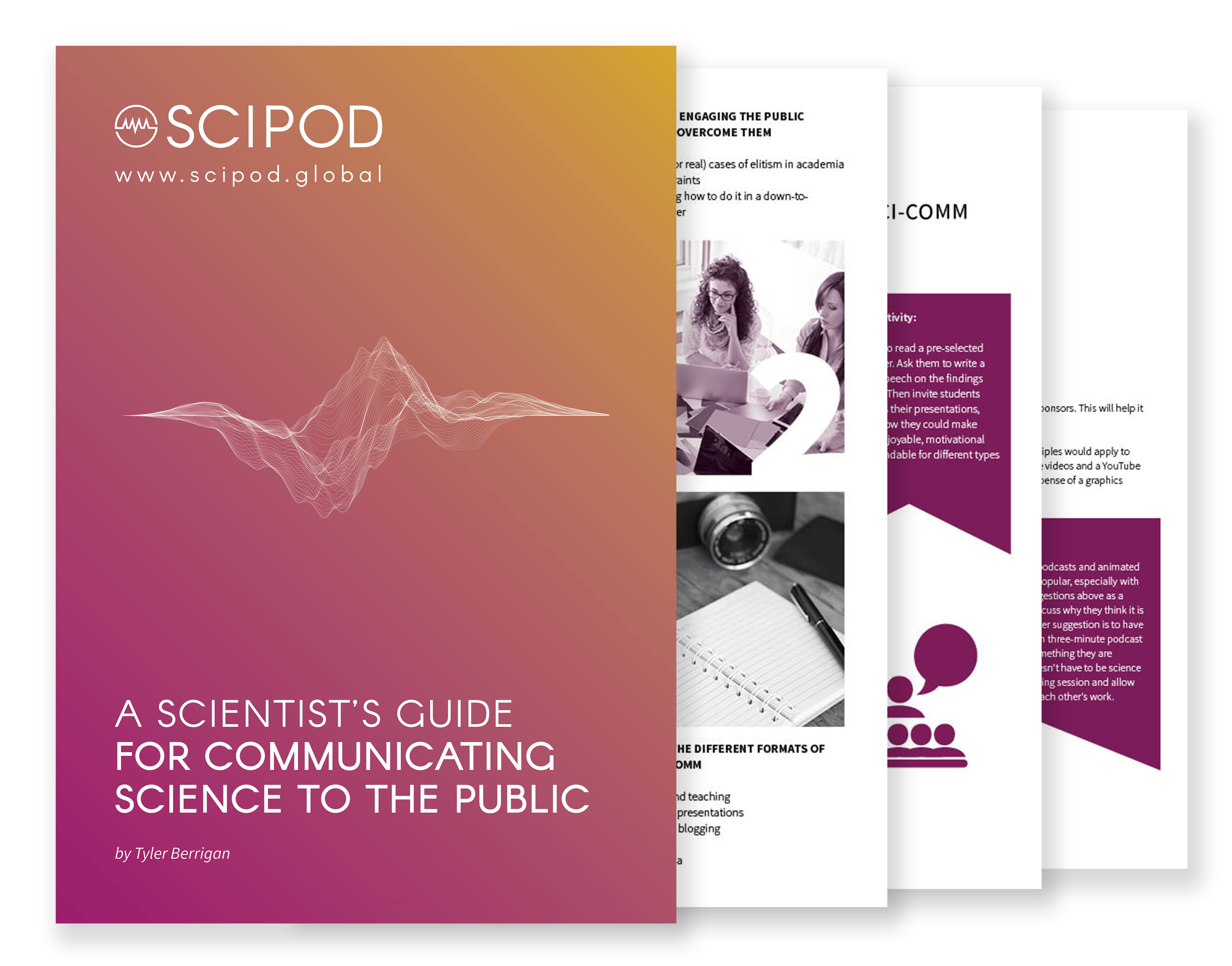Welcome to SciComm Radio
An exclusive interview series with leading scientists and science communicators
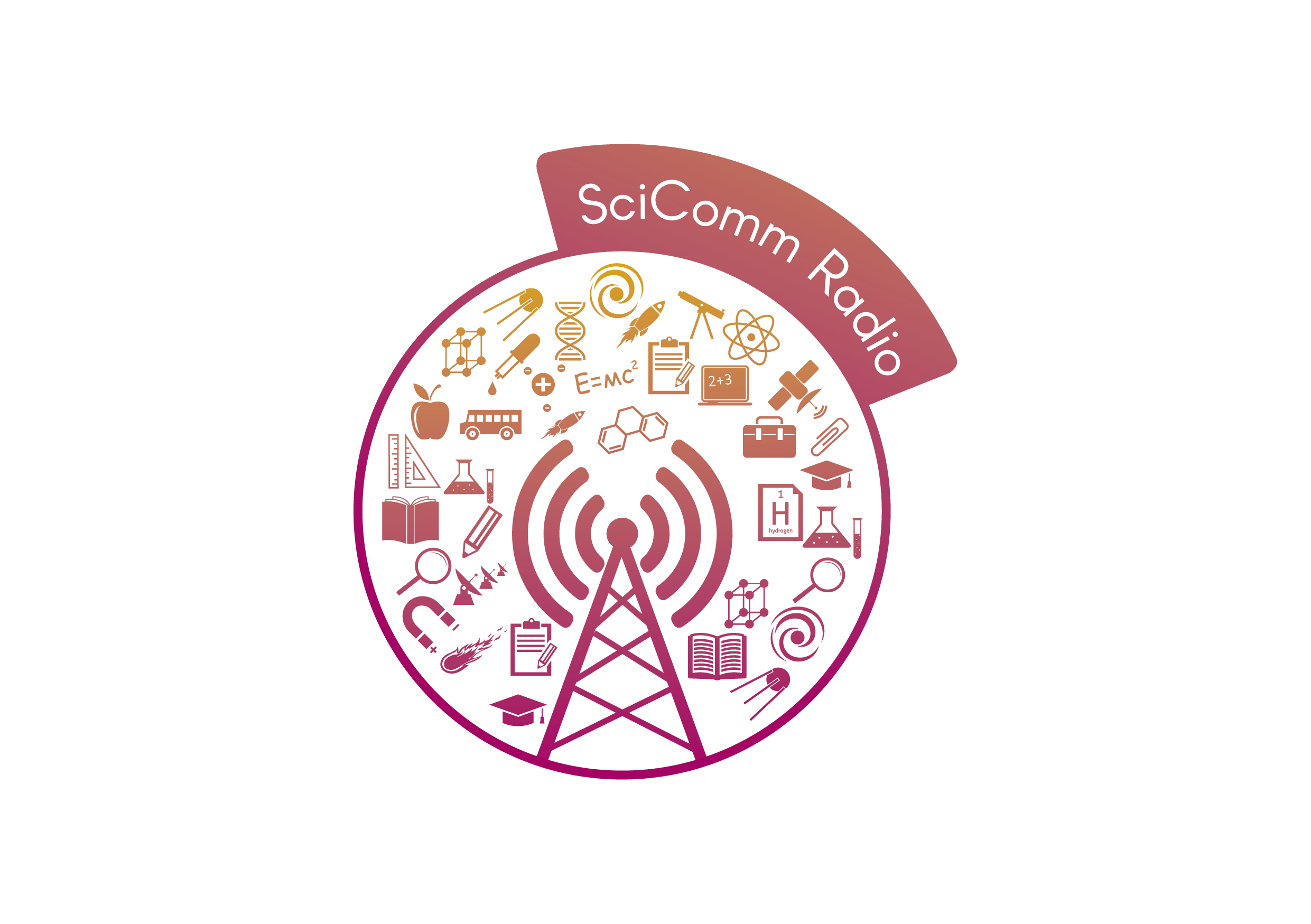
Click Below To Listen To A SciPod Radio Episode
Addressing Inequality in Education – Dr Suzanna Rose, Florida International University
Addressing Inequality in Education – Dr Suzanna Rose, Florida International University
Original Article Reference
https://doi.org/10.33548/SCIENTIA452
Share Episode
About this episode
The underrepresentation of women and minority groups in science, technology, engineering, and mathematics (STEM) related fields of employment and study is a widespread and serious issue in academia. Dr Suzanna Rose of Florida International University (FIU) is breaking down the barriers that women and minorities face in taking up faculty positions within higher education institutions. Her mission is to achieve, sustain and advocate for faculty diversity at FIU.
This work is licensed under a Creative Commons Attribution 4.0 International License. 
What does this mean?
Share: You can copy and redistribute the material in any medium
or format
Adapt: You can change, and build upon the material for any
purpose, even commercially.
Credit: You must give appropriate credit, provide a link to the
license, and indicate if changes were made.
Related episodes
Increase the impact of your research
• Good science communication encourages everyday people to be scientifically literate so that they can analyse the integrity and legitimacy of information.
• Good science communication encourages people into STEM-related fields of study and employment.
• Good public science communication fosters a community around research that includes both members of the public, policymakers and scientists.
• In a recent survey, 75% of people suggested they would prefer to listen to an interesting story than read it.

Upload your science paper
Step 2
SciPod script written
Step 3
Voice audio recorded
Step 4
SciPod published
Protecting the Plains, A Comprehensive Approach to Invasive Plant Control – Professor KC Olson, Kansas State University
Protecting the Plains, A Comprehensive Approach to Invasive Plant Control – Professor KC Olson, Kansas State University
Original Article Reference
https://doi.org/10.26320/SCIENTIA219
Share Episode
About this episode
Around the world, invasive species provide a major threat to global biodiversity. The Great Plains of the United States are among the most threatened ecosystems, where a noxious invasive weed is overpowering the native tallgrass prairies. Professor KC Olson and his team at Kansas State University are working to identify eco-friendly ways to naturalise the weed and preserve native prairie.
This work is licensed under a Creative Commons Attribution 4.0 International License. 
What does this mean?
Share: You can copy and redistribute the material in any medium
or format
Adapt: You can change, and build upon the material for any
purpose, even commercially.
Credit: You must give appropriate credit, provide a link to the
license, and indicate if changes were made.
Related episodes
Increase the impact of your research
• Good science communication encourages everyday people to be scientifically literate so that they can analyse the integrity and legitimacy of information.
• Good science communication encourages people into STEM-related fields of study and employment.
• Good public science communication fosters a community around research that includes both members of the public, policymakers and scientists.
• In a recent survey, 75% of people suggested they would prefer to listen to an interesting story than read it.

Upload your science paper
Step 2
SciPod script written
Step 3
Voice audio recorded
Step 4
SciPod published
Focusing on the Problem in STEM Education – Dr John K. Coleman, Langston University
Focusing on the Problem in STEM Education – Dr John K. Coleman, Langston University
Original Article Reference
https://doi.org/10.26320/SCIENTIA205
Share Episode
About this episode
The modern workforce needs to be more science educated than ever, yet the number of students in higher education enrolled in scientific subjects has not increased. Dr John Coleman at Langston University, Oklahoma, is developing novel methods for teaching scientific concepts that engage students in critical problem-solving skills. His research is increasing retention in scientific undergraduate degrees and is laying the groundwork for a transformative method of science teaching.
This work is licensed under a Creative Commons Attribution 4.0 International License. 
What does this mean?
Share: You can copy and redistribute the material in any medium
or format
Adapt: You can change, and build upon the material for any
purpose, even commercially.
Credit: You must give appropriate credit, provide a link to the
license, and indicate if changes were made.
Related episodes
Increase the impact of your research
• Good science communication encourages everyday people to be scientifically literate so that they can analyse the integrity and legitimacy of information.
• Good science communication encourages people into STEM-related fields of study and employment.
• Good public science communication fosters a community around research that includes both members of the public, policymakers and scientists.
• In a recent survey, 75% of people suggested they would prefer to listen to an interesting story than read it.

Upload your science paper
Step 2
SciPod script written
Step 3
Voice audio recorded
Step 4
SciPod published
Complexed Drugs for Complex Diseases – Dr Joseph Anthoney Vetro, University of Nebraska Medical Center
Complexed Drugs for Complex Diseases – Dr Joseph Anthoney Vetro, University of Nebraska Medical Center
Original Article Reference
https://doi.org/10.26320/SCIENTIA210
Share Episode
About this episode
This work is licensed under a Creative Commons Attribution 4.0 International License. 
What does this mean?
Share: You can copy and redistribute the material in any medium
or format
Adapt: You can change, and build upon the material for any
purpose, even commercially.
Credit: You must give appropriate credit, provide a link to the
license, and indicate if changes were made.
Related episodes
Increase the impact of your research
• Good science communication encourages everyday people to be scientifically literate so that they can analyse the integrity and legitimacy of information.
• Good science communication encourages people into STEM-related fields of study and employment.
• Good public science communication fosters a community around research that includes both members of the public, policymakers and scientists.
• In a recent survey, 75% of people suggested they would prefer to listen to an interesting story than read it.

Upload your science paper
Step 2
SciPod script written
Step 3
Voice audio recorded
Step 4
SciPod published
Combatting the Lionfish Invasion – Dr Mark Hixon and Lab, University of Hawaii
Combatting the Lionfish Invasion – Dr Mark Hixon and Lab, University of Hawaii
Original Article Reference
https://doi.org/10.26320/SCIENTIA220
Share Episode
About this episode
This work is licensed under a Creative Commons Attribution 4.0 International License. 
What does this mean?
Share: You can copy and redistribute the material in any medium
or format
Adapt: You can change, and build upon the material for any
purpose, even commercially.
Credit: You must give appropriate credit, provide a link to the
license, and indicate if changes were made.
Related episodes
Increase the impact of your research
• Good science communication encourages everyday people to be scientifically literate so that they can analyse the integrity and legitimacy of information.
• Good science communication encourages people into STEM-related fields of study and employment.
• Good public science communication fosters a community around research that includes both members of the public, policymakers and scientists.
• In a recent survey, 75% of people suggested they would prefer to listen to an interesting story than read it.

Upload your science paper
Step 2
SciPod script written
Step 3
Voice audio recorded
Step 4
SciPod published
A New Generation of Chemical Sensors – Dr Simon Humphrey & Sam Dunning, University of Texas
A New Generation of Chemical Sensors – Dr Simon Humphrey & Sam Dunning, University of Texas
Original Article Reference
https://doi.org/10.26320/SCIENTIA201
Share Episode
About this episode
Dr Simon Humphrey and Sam Dunning at the University of Texas at Austin have created a new lanthanide-based chemical sensor that can identify trace levels of water in many different solvents, and can even distinguish between normal water and ‘heavy water’. The team’s new material could potentially be applied to medical imaging and for cleaning up chemical spills.
This work is licensed under a Creative Commons Attribution 4.0 International License. 
What does this mean?
Share: You can copy and redistribute the material in any medium
or format
Adapt: You can change, and build upon the material for any
purpose, even commercially.
Credit: You must give appropriate credit, provide a link to the
license, and indicate if changes were made.
Related episodes
Increase the impact of your research
• Good science communication encourages everyday people to be scientifically literate so that they can analyse the integrity and legitimacy of information.
• Good science communication encourages people into STEM-related fields of study and employment.
• Good public science communication fosters a community around research that includes both members of the public, policymakers and scientists.
• In a recent survey, 75% of people suggested they would prefer to listen to an interesting story than read it.

Upload your science paper
Step 2
SciPod script written
Step 3
Voice audio recorded
Step 4
SciPod published
Improving Aircraft Performance with Plasma Actuators – Drs Huu Duc Vo & Njuki W Mureithi, École Polytechnique de Montréal
Improving Aircraft Performance with Plasma Actuators – Drs Huu Duc Vo & Njuki W Mureithi, École Polytechnique de Montréal
Original Article Reference
https://doi.org/10.26320/SCIENTIA195
Share Episode
About this episode
This work is licensed under a Creative Commons Attribution 4.0 International License. 
What does this mean?
Share: You can copy and redistribute the material in any medium
or format
Adapt: You can change, and build upon the material for any
purpose, even commercially.
Credit: You must give appropriate credit, provide a link to the
license, and indicate if changes were made.
Related episodes
Increase the impact of your research
• Good science communication encourages everyday people to be scientifically literate so that they can analyse the integrity and legitimacy of information.
• Good science communication encourages people into STEM-related fields of study and employment.
• Good public science communication fosters a community around research that includes both members of the public, policymakers and scientists.
• In a recent survey, 75% of people suggested they would prefer to listen to an interesting story than read it.

Upload your science paper
Step 2
SciPod script written
Step 3
Voice audio recorded
Step 4
SciPod published
An Interdisciplinary Approach to Water Management – Drs Marcellus Caldas & Melinda Daniels, Stroud Water Research Centre
An Interdisciplinary Approach to Water Management – Drs Marcellus Caldas & Melinda Daniels, Stroud Water Research Centre
Original Article Reference
https://doi.org/10.26320/SCIENTIA196
Share Episode
About this episode
According to the WHO, half of the world’s population will be living in water-stressed areas by 2025. Therefore, managing our water resources is vital, especially in a changing climate. On that front, an interdisciplinary team from Kansas State University, led by Dr Marcellus Caldas and Dr Melinda Daniels from the Stroud Water Research Centre, seeks to understand how human-environment interactions and climate change affect water management and sustainability on the Central Great Plains of the United States.
This work is licensed under a Creative Commons Attribution 4.0 International License. 
What does this mean?
Share: You can copy and redistribute the material in any medium
or format
Adapt: You can change, and build upon the material for any
purpose, even commercially.
Credit: You must give appropriate credit, provide a link to the
license, and indicate if changes were made.
Related episodes
Increase the impact of your research
• Good science communication encourages everyday people to be scientifically literate so that they can analyse the integrity and legitimacy of information.
• Good science communication encourages people into STEM-related fields of study and employment.
• Good public science communication fosters a community around research that includes both members of the public, policymakers and scientists.
• In a recent survey, 75% of people suggested they would prefer to listen to an interesting story than read it.

Upload your science paper
Step 2
SciPod script written
Step 3
Voice audio recorded
Step 4
SciPod published
Buzzing & Blooming, Bee-Flower Interactions in Crop Production – Professor Johanne Brunet, USDA-ARS Vegetable Crops Research Unit
Buzzing & Blooming, Bee-Flower Interactions in Crop Production – Professor Johanne Brunet, USDA-ARS Vegetable Crops Research Unit
Original Article Reference
https://doi.org/10.26320/SCIENTIA199
Share Episode
About this episode
This work is licensed under a Creative Commons Attribution 4.0 International License. 
What does this mean?
Share: You can copy and redistribute the material in any medium
or format
Adapt: You can change, and build upon the material for any
purpose, even commercially.
Credit: You must give appropriate credit, provide a link to the
license, and indicate if changes were made.
Related episodes
Increase the impact of your research
• Good science communication encourages everyday people to be scientifically literate so that they can analyse the integrity and legitimacy of information.
• Good science communication encourages people into STEM-related fields of study and employment.
• Good public science communication fosters a community around research that includes both members of the public, policymakers and scientists.
• In a recent survey, 75% of people suggested they would prefer to listen to an interesting story than read it.

Upload your science paper
Step 2
SciPod script written
Step 3
Voice audio recorded
Step 4
SciPod published
The Role of Policies in Managing Scarce Water Resources – Drs Jose Albiac, Ariel Dinar, Encarna Esteban & Dr Taher Kahil
The Role of Policies in Managing Scarce Water Resources – Drs Jose Albiac, Ariel Dinar, Encarna Esteban & Dr Taher Kahil
Original Article Reference
https://doi.org/10.26320/SCIENTIA185
Share Episode
About this episode
This work is licensed under a Creative Commons Attribution 4.0 International License. 
What does this mean?
Share: You can copy and redistribute the material in any medium
or format
Adapt: You can change, and build upon the material for any
purpose, even commercially.
Credit: You must give appropriate credit, provide a link to the
license, and indicate if changes were made.
Related episodes
Increase the impact of your research
• Good science communication encourages everyday people to be scientifically literate so that they can analyse the integrity and legitimacy of information.
• Good science communication encourages people into STEM-related fields of study and employment.
• Good public science communication fosters a community around research that includes both members of the public, policymakers and scientists.
• In a recent survey, 75% of people suggested they would prefer to listen to an interesting story than read it.

Upload your science paper
Step 2
SciPod script written
Step 3
Voice audio recorded
Step 4
SciPod published
Negative Ion Formation in Complex Heavy Systems – Dr Alfred Msezane, Clark Atlanta University
Negative Ion Formation in Complex Heavy Systems – Dr Alfred Msezane, Clark Atlanta University
Original Article Reference
https://doi.org/10.26320/SCIENTIA192
Share Episode
About this episode
This work is licensed under a Creative Commons Attribution 4.0 International License. 
What does this mean?
Share: You can copy and redistribute the material in any medium
or format
Adapt: You can change, and build upon the material for any
purpose, even commercially.
Credit: You must give appropriate credit, provide a link to the
license, and indicate if changes were made.
Related episodes
Increase the impact of your research
• Good science communication encourages everyday people to be scientifically literate so that they can analyse the integrity and legitimacy of information.
• Good science communication encourages people into STEM-related fields of study and employment.
• Good public science communication fosters a community around research that includes both members of the public, policymakers and scientists.
• In a recent survey, 75% of people suggested they would prefer to listen to an interesting story than read it.

Upload your science paper
Step 2
SciPod script written
Step 3
Voice audio recorded
Step 4
SciPod published
Inspiring Science Teachers in the Arizona Borderlands – Dr Etta Kralovec, University of Arizona, South
Inspiring Science Teachers in the Arizona Borderlands – Dr Etta Kralovec, University of Arizona, South
Original Article Reference
https://doi.org/10.26320/SCIENTIA171
Share Episode
About this episode
This work is licensed under a Creative Commons Attribution 4.0 International License. 
What does this mean?
Share: You can copy and redistribute the material in any medium
or format
Adapt: You can change, and build upon the material for any
purpose, even commercially.
Credit: You must give appropriate credit, provide a link to the
license, and indicate if changes were made.
Related episodes
Increase the impact of your research
• Good science communication encourages everyday people to be scientifically literate so that they can analyse the integrity and legitimacy of information.
• Good science communication encourages people into STEM-related fields of study and employment.
• Good public science communication fosters a community around research that includes both members of the public, policymakers and scientists.
• In a recent survey, 75% of people suggested they would prefer to listen to an interesting story than read it.

Upload your science paper
Step 2
SciPod script written
Step 3
Voice audio recorded
Step 4
SciPod published
Greener Pastures, Transforming Land Management Practices in the Cattle Industry – Department of Animal Sciences, Auburn University
Greener Pastures, Transforming Land Management Practices in the Cattle Industry – Department of Animal Sciences, Auburn University
Original Article Reference
https://doi.org/10.26320/SCIENTIA183
Share Episode
About this episode
This work is licensed under a Creative Commons Attribution 4.0 International License. 
What does this mean?
Share: You can copy and redistribute the material in any medium
or format
Adapt: You can change, and build upon the material for any
purpose, even commercially.
Credit: You must give appropriate credit, provide a link to the
license, and indicate if changes were made.
Related episodes
Increase the impact of your research
• Good science communication encourages everyday people to be scientifically literate so that they can analyse the integrity and legitimacy of information.
• Good science communication encourages people into STEM-related fields of study and employment.
• Good public science communication fosters a community around research that includes both members of the public, policymakers and scientists.
• In a recent survey, 75% of people suggested they would prefer to listen to an interesting story than read it.

Upload your science paper
Step 2
SciPod script written
Step 3
Voice audio recorded
Step 4
SciPod published
Education and Health Disparity Across the US – Drs Mark D. Hayward & Jennifer Karas Montez
Education and Health Disparity Across the US – Drs Mark D. Hayward & Jennifer Karas Montez
Original Article Reference
https://doi.org/10.26320/SCIENTIA172
Share Episode
About this episode
This work is licensed under a Creative Commons Attribution 4.0 International License. 
What does this mean?
Share: You can copy and redistribute the material in any medium
or format
Adapt: You can change, and build upon the material for any
purpose, even commercially.
Credit: You must give appropriate credit, provide a link to the
license, and indicate if changes were made.
Related episodes
Increase the impact of your research
• Good science communication encourages everyday people to be scientifically literate so that they can analyse the integrity and legitimacy of information.
• Good science communication encourages people into STEM-related fields of study and employment.
• Good public science communication fosters a community around research that includes both members of the public, policymakers and scientists.
• In a recent survey, 75% of people suggested they would prefer to listen to an interesting story than read it.

Upload your science paper
Step 2
SciPod script written
Step 3
Voice audio recorded
Step 4
SciPod published
The Molecular World of Aphid Feeding – Professor Gerald Reeck, Kansas State University
The Molecular World of Aphid Feeding – Professor Gerald Reeck, Kansas State University
Original Article Reference
https://doi.org/10.26320/SCIENTIA181
Share Episode
About this episode
Professor Gerald Reeck and his team at Kansas State University are investigating the molecular basis of aphid herbivory, including suppression of plant defences, using powerful methods of molecular genetics. This research is important for developing new aphid-pest resistance strategies for crop plants.
This work is licensed under a Creative Commons Attribution 4.0 International License. 
What does this mean?
Share: You can copy and redistribute the material in any medium
or format
Adapt: You can change, and build upon the material for any
purpose, even commercially.
Credit: You must give appropriate credit, provide a link to the
license, and indicate if changes were made.
Related episodes
Increase the impact of your research
• Good science communication encourages everyday people to be scientifically literate so that they can analyse the integrity and legitimacy of information.
• Good science communication encourages people into STEM-related fields of study and employment.
• Good public science communication fosters a community around research that includes both members of the public, policymakers and scientists.
• In a recent survey, 75% of people suggested they would prefer to listen to an interesting story than read it.

Upload your science paper
Step 2
SciPod script written
Step 3
Voice audio recorded
Step 4
SciPod published
Fostering Empathy in Engineering Education – Dr Nicola Sochacka, Dr Joachim Walther and Dr Shari Miller
Fostering Empathy in Engineering Education – Dr Nicola Sochacka, Dr Joachim Walther and Dr Shari Miller
Original Article Reference
https://doi.org/10.26320/SCIENTIA175
Share Episode
About this episode
 What does this mean? Share: You can copy and redistribute the material in any medium or format Adapt: You can change, and build upon the material for any purpose, even commercially. Credit: You must give appropriate credit, provide a link to the license, and indicate if changes were made.
What does this mean? Share: You can copy and redistribute the material in any medium or format Adapt: You can change, and build upon the material for any purpose, even commercially. Credit: You must give appropriate credit, provide a link to the license, and indicate if changes were made.Related episodes
Increase the impact of your research

Working Together to Achieve a Better Future for the Horticultural Industry – Dr Lynda K Deeks, Dr Chantelle N Jay and Dr Laura H Vickers
Working Together to Achieve a Better Future for the Horticultural Industry – Dr Lynda K Deeks, Dr Chantelle N Jay and Dr Laura H Vickers
Original Article Reference
https://doi.org/10.26320/SCIENTIA177
Share Episode
About this episode
 What does this mean? Share: You can copy and redistribute the material in any medium or format Adapt: You can change, and build upon the material for any purpose, even commercially. Credit: You must give appropriate credit, provide a link to the license, and indicate if changes were made.
What does this mean? Share: You can copy and redistribute the material in any medium or format Adapt: You can change, and build upon the material for any purpose, even commercially. Credit: You must give appropriate credit, provide a link to the license, and indicate if changes were made.Related episodes
Increase the impact of your research

Investigating Cosmic Snowballs – Professor David Jewitt, University of California, Los Angeles
Investigating Cosmic Snowballs – Professor David Jewitt, University of California, Los Angeles
Original Article Reference
https://doi.org/10.26320/SCIENTIA169
Share Episode
About this episode
Professor David Jewitt and his team at UCLA explore the nature of comets. These fleeting visitors to our cosmic shore are important sources of information, and can help to reveal the origin and evolution of the solar system. Most recently, Professor Jewitt’s team have explained the unusual activity of some of the most distant comets in the solar system.
This work is licensed under a Creative Commons Attribution 4.0 International License.  What does this mean? Share: You can copy and redistribute the material in any medium or format Adapt: You can change, and build upon the material for any purpose, even commercially. Credit: You must give appropriate credit, provide a link to the license, and indicate if changes were made.
What does this mean? Share: You can copy and redistribute the material in any medium or format Adapt: You can change, and build upon the material for any purpose, even commercially. Credit: You must give appropriate credit, provide a link to the license, and indicate if changes were made.
Related episodes
Increase the impact of your research

Step 1 Upload your science paper
Step 2 SciPod script written
Step 3 Voice audio recorded
Step 4 SciPod published
Statistical Methods for Small Data – Dr Rens van de Schoot, Utrecht University
Statistical Methods for Small Data – Dr Rens van de Schoot, Utrecht University
Original Article Reference
https://doi.org/10.26320/SCIENTIA162
Share Episode
About this episode
Researchers are heavily reliant on statistical techniques that are based on large sample sizes. Therefore, attempts to gain useful information from small samples can often lead to biased, or incorrect conclusions. Dr Rens van de Schoot at Utrecht University has shown that the limitations associated with small samples sizes can be overcome by using an alternative method – Bayesian estimation – as an all-encompassing approach to quantitative research. However, this approach comes at a price: expert knowledge must be integrated into the statistical model.
This work is licensed under a Creative Commons Attribution 4.0 International License. 
What does this mean?
Share: You can copy and redistribute the material in any medium or format
Adapt: You can change, and build upon the material for any purpose, even commercially.
Credit: You must give appropriate credit, provide a link to the license, and indicate if changes were made.
Related episodes
Increase the impact of your research
• Good science communication encourages everyday people to be scientifically literate so that they can analyse the integrity and legitimacy of information.
• Good science communication encourages people into STEM-related fields of study and employment.
• Good public science communication fosters a community around research that includes both members of the public, policymakers and scientists.
• In a recent survey, 75% of people suggested they would prefer to listen to an interesting story than read it.

Step 1 Upload your science paper
Step 2 SciPod script written
Step 3 Voice audio recorded
Step 4 SciPod published
Sub-Zero Survival, Revealing How Plants Freeze – Drs David Livingston and Michael Wisniewski, USDA
Sub-Zero Survival, Revealing How Plants Freeze – Drs David Livingston and Michael Wisniewski, USDA
Original Article Reference
https://doi.org/10.26320/SCIENTIA159
Share Episode
About this episode
Watching plants return to life after a spell of cold winter weather can seem like a miracle. For over a century, biologists have understood that plant survival depends on a variety of co-dependent mechanisms, yet their methods for coping with temperatures far below freezing are still poorly understood. Dr David Livingston and Dr Michael Wisniewski of the US Department of Agriculture have provided fresh insights into these mechanisms, with the help of remarkably intricate imaging techniques.
This work is licensed under a Creative Commons Attribution 4.0 International License.  What does this mean? Share: You can copy and redistribute the material in any medium or format Adapt: You can change, and build upon the material for any purpose, even commercially. Credit: You must give appropriate credit, provide a link to the license, and indicate if changes were made.
What does this mean? Share: You can copy and redistribute the material in any medium or format Adapt: You can change, and build upon the material for any purpose, even commercially. Credit: You must give appropriate credit, provide a link to the license, and indicate if changes were made.
Related episodes
Increase the impact of your research
• Good science communication encourages everyday people to be scientifically literate so that they can analyse the integrity and legitimacy of information.
• Good science communication encourages people into STEM-related fields of study and employment.
• Good public science communication fosters a community around research that includes both members of the public, policymakers and scientists.
• In a recent survey, 75% of people suggested they would prefer to listen to an interesting story than read it.

Step 1 Upload your science paper
Step 2 SciPod script written
Step 3 Voice audio recorded
Step 4 SciPod published
Modelling Shock Waves and Particle Interactions in High-Speed Flows – Professor Gustaaf Jacobs, San Diego State University
Modelling Shock Waves and Particle Interactions in High-Speed Flows – Professor Gustaaf Jacobs, San Diego State University
Original Article Reference
https://doi.org/10.26320/SCIENTIA164
Share Episode
About this episode
Understanding how shock waves, flow dynamics and turbulence all interact and affect the distribution of particles has applications ranging from high-speed vehicles to explosions and even ocean sediment dynamics. Professor Gustaaf Jacobs at San Diego State University develops computational and self-learning models and algorithms to study the dynamics of shocked particles within high-speed flows.
This work is licensed under a Creative Commons Attribution 4.0 International License.  What does this mean? Share: You can copy and redistribute the material in any medium or format Adapt: You can change, and build upon the material for any purpose, even commercially. Credit: You must give appropriate credit, provide a link to the license, and indicate if changes were made.
What does this mean? Share: You can copy and redistribute the material in any medium or format Adapt: You can change, and build upon the material for any purpose, even commercially. Credit: You must give appropriate credit, provide a link to the license, and indicate if changes were made.
Related episodes
Increase the impact of your research
• Good science communication encourages everyday people to be scientifically literate so that they can analyse the integrity and legitimacy of information.
• Good science communication encourages people into STEM-related fields of study and employment.
• Good public science communication fosters a community around research that includes both members of the public, policymakers and scientists.
• In a recent survey, 75% of people suggested they would prefer to listen to an interesting story than read it.

Step 1 Upload your science paper
Step 2 SciPod script written
Step 3 Voice audio recorded
Step 4 SciPod published
Brain Training – Professor Sylvain Baillet, McGill University
Brain Training – Professor Sylvain Baillet, McGill University
Original Article Reference
https://doi.org/10.26320/SCIENTIA163
Share Episode
About this episode
Gaining insight into the brain and its inner workings improves our understanding of behaviour and our knowledge of the diseases and treatments of our most complex organ. Professor Sylvain Baillet and his research team at the McConnell Brain Imaging Centre of the Montreal Neurological Institute, are illuminating the brain and its functions using the latest real-time imaging technology.
This work is licensed under a Creative Commons Attribution 4.0 International License.  What does this mean? Share: You can copy and redistribute the material in any medium or format Adapt: You can change, and build upon the material for any purpose, even commercially. Credit: You must give appropriate credit, provide a link to the license, and indicate if changes were made.
What does this mean? Share: You can copy and redistribute the material in any medium or format Adapt: You can change, and build upon the material for any purpose, even commercially. Credit: You must give appropriate credit, provide a link to the license, and indicate if changes were made.
Related episodes
Increase the impact of your research
• Good science communication encourages everyday people to be scientifically literate so that they can analyse the integrity and legitimacy of information.
• Good science communication encourages people into STEM-related fields of study and employment.
• Good public science communication fosters a community around research that includes both members of the public, policymakers and scientists.
• In a recent survey, 75% of people suggested they would prefer to listen to an interesting story than read it.

Step 1 Upload your science paper
Step 2 SciPod script written
Step 3 Voice audio recorded
Step 4 SciPod published
Cell Physics, Understanding How Biological Matter Self-Organises – The Collaborative Research Centre SFB 1027 at the Saarland University
Cell Physics, Understanding How Biological Matter Self-Organises – The Collaborative Research Centre SFB 1027 at the Saarland University
Original Article Reference
https://doi.org/10.26320/SCIENTIA156
Share Episode
About this episode
The Collaborative Research Centre SFB 1027 at the Saarland University in Saarbrücken and Homburg is an interdisciplinary research team that aims to achieve a quantitative understanding of the physical mechanisms at work when biological matter self-organises into complex structures. Such self-organisation allows biological systems to perform dynamic functions including cell migration and polarisation, cell-cell adherence and synaptic transmission, biofilm formation and tissue growth.
This work is licensed under a Creative Commons Attribution 4.0 International License. 
What does this mean?
Share: You can copy and redistribute the material in any medium or format
Adapt: You can change, and build upon the material for any purpose, even commercially.
Credit: You must give appropriate credit, provide a link to the license, and indicate if changes were made.
Related episodes
Increase the impact of your research
• Good science communication encourages everyday people to be scientifically literate so that they can analyse the integrity and legitimacy of information.
• Good science communication encourages people into STEM-related fields of study and employment.
• Good public science communication fosters a community around research that includes both members of the public, policymakers and scientists.
• In a recent survey, 75% of people suggested they would prefer to listen to an interesting story than read it.

Step 1 Upload your science paper
Step 2 SciPod script written
Step 3 Voice audio recorded
Step 4 SciPod published
Making Researchers of STEM Undergraduates – Drs Kelly McDonald and Thomas Landerholm, California State University, Sacramento
Making Researchers of STEM Undergraduates – Drs Kelly McDonald and Thomas Landerholm, California State University, Sacramento
Original Article Reference
https://doi.org/10.26320/SCIENTIA150
Share Episode
About this episode
This work is licensed under a Creative Commons Attribution 4.0 International License. 
What does this mean?
Share: You can copy and redistribute the material in any medium or format
Adapt: You can change, and build upon the material for any purpose, even commercially.
Credit: You must give appropriate credit, provide a link to the license, and indicate if changes were made.
Related episodes
Increase the impact of your research
• Good science communication encourages everyday people to be scientifically literate so that they can analyse the integrity and legitimacy of information.
• Good science communication encourages people into STEM-related fields of study and employment.
• Good public science communication fosters a community around research that includes both members of the public, policymakers and scientists.
• In a recent survey, 75% of people suggested they would prefer to listen to an interesting story than read it.

Step 1 Upload your science paper
Step 2 SciPod script written
Step 3 Voice audio recorded
Step 4 SciPod published
Harnessing Mobile Technology to Improve Student Retention – Dr Lori H. Silverman, Colytix Inc
Harnessing Mobile Technology to Improve Student Retention – Dr Lori H. Silverman, Colytix Inc
Original Article Reference
https://doi.org/10.26320/SCIENTIA157
Share Episode
About this episode
Dr Lori Silverman, an expert in education and student retention, is the Co-Founder and Chief Executive Officer of Colytix. The company, founded in 2016, is developing innovative tools for higher education students to improve success and retention rates in class, while creating a platform for the analysis of factors that contribute to student success rates.
This work is licensed under a Creative Commons Attribution 4.0 International License. 
What does this mean?
Share: You can copy and redistribute the material in any medium or format
Adapt: You can change, and build upon the material for any purpose, even commercially.
Credit: You must give appropriate credit, provide a link to the license, and indicate if changes were made.
Related episodes
Increase the impact of your research
• Good science communication encourages everyday people to be scientifically literate so that they can analyse the integrity and legitimacy of information.
• Good science communication encourages people into STEM-related fields of study and employment.
• Good public science communication fosters a community around research that includes both members of the public, policymakers and scientists.
• In a recent survey, 75% of people suggested they would prefer to listen to an interesting story than read it.

Step 1 Upload your science paper
Step 2 SciPod script written
Step 3 Voice audio recorded
Step 4 SciPod published
Learning to Forget, Extinguishing Fearful Memories – Professor Stephen Maren, Texas A&M University
Learning to Forget, Extinguishing Fearful Memories – Professor Stephen Maren, Texas A&M University
Original Article Reference
https://doi.org/10.26320/SCIENTIA151
Share Episode
About this episode
We often hear how impairments in learning can have a negative impact on peoples’ lives but what about problems with forgetting? The inability to forget the association between everyday cues and previous traumatic events underlies anxiety-related disorders, such as post-traumatic stress disorder (PTSD). Professor Stephen Maren at Texas A&M university is using cutting-edge techniques to reveal the neural basis of the relapse of traumatic memories.
This work is licensed under a Creative Commons Attribution 4.0 International License. 
What does this mean?
Share: You can copy and redistribute the material in any medium or format
Adapt: You can change, and build upon the material for any purpose, even commercially.
Credit: You must give appropriate credit, provide a link to the license, and indicate if changes were made.
Related episodes
Increase the impact of your research
• Good science communication encourages everyday people to be scientifically literate so that they can analyse the integrity and legitimacy of information.
• Good science communication encourages people into STEM-related fields of study and employment.
• Good public science communication fosters a community around research that includes both members of the public, policymakers and scientists.
• In a recent survey, 75% of people suggested they would prefer to listen to an interesting story than read it.

Step 1 Upload your science paper
Step 2 SciPod script written
Step 3 Voice audio recorded
Step 4 SciPod published
Good Bacteria Gone Bad – Professor Hannah M. Wexler, VA Health Care System
Good Bacteria Gone Bad – Professor Hannah M. Wexler, VA Health Care System
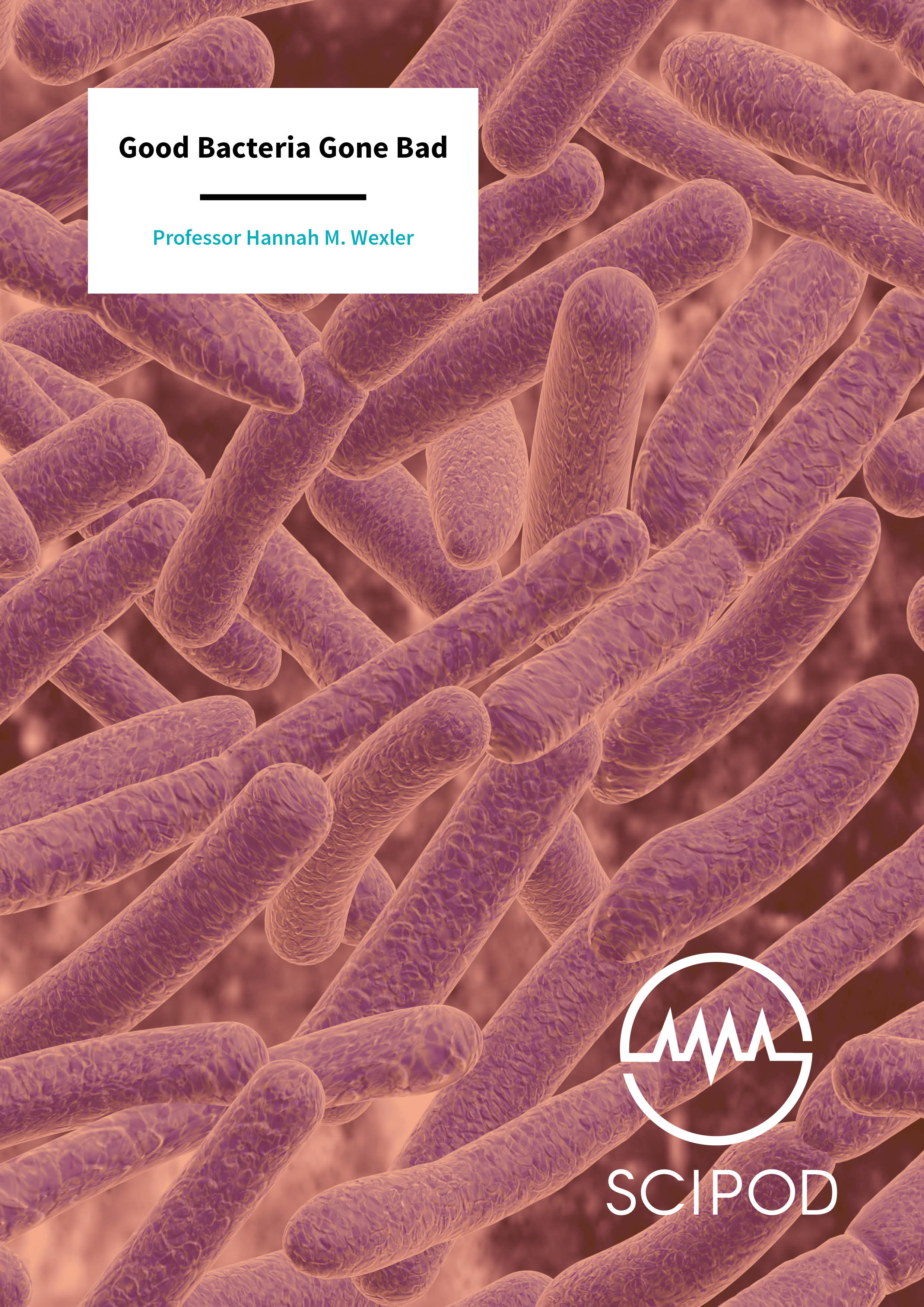
You may also like …
Improving High Performance Data Analytics Platforms & Smart Systems: Resource Management and Middleware
Improving High Performance Data Analytics Platforms & Smart Systems: Resource Management and Middleware
Our rapidly increasing production of data is straining computer infrastructures to unprecedented levels. As researchers develop much-needed coping mechanisms, Dr Shikharesh Majumdar at Carleton University focuses on two important solutions to the issue: creating techniques for efficiently handling the analysis of large amounts of data and developing middleware platforms that unify geographically scattered computer and storage resources.
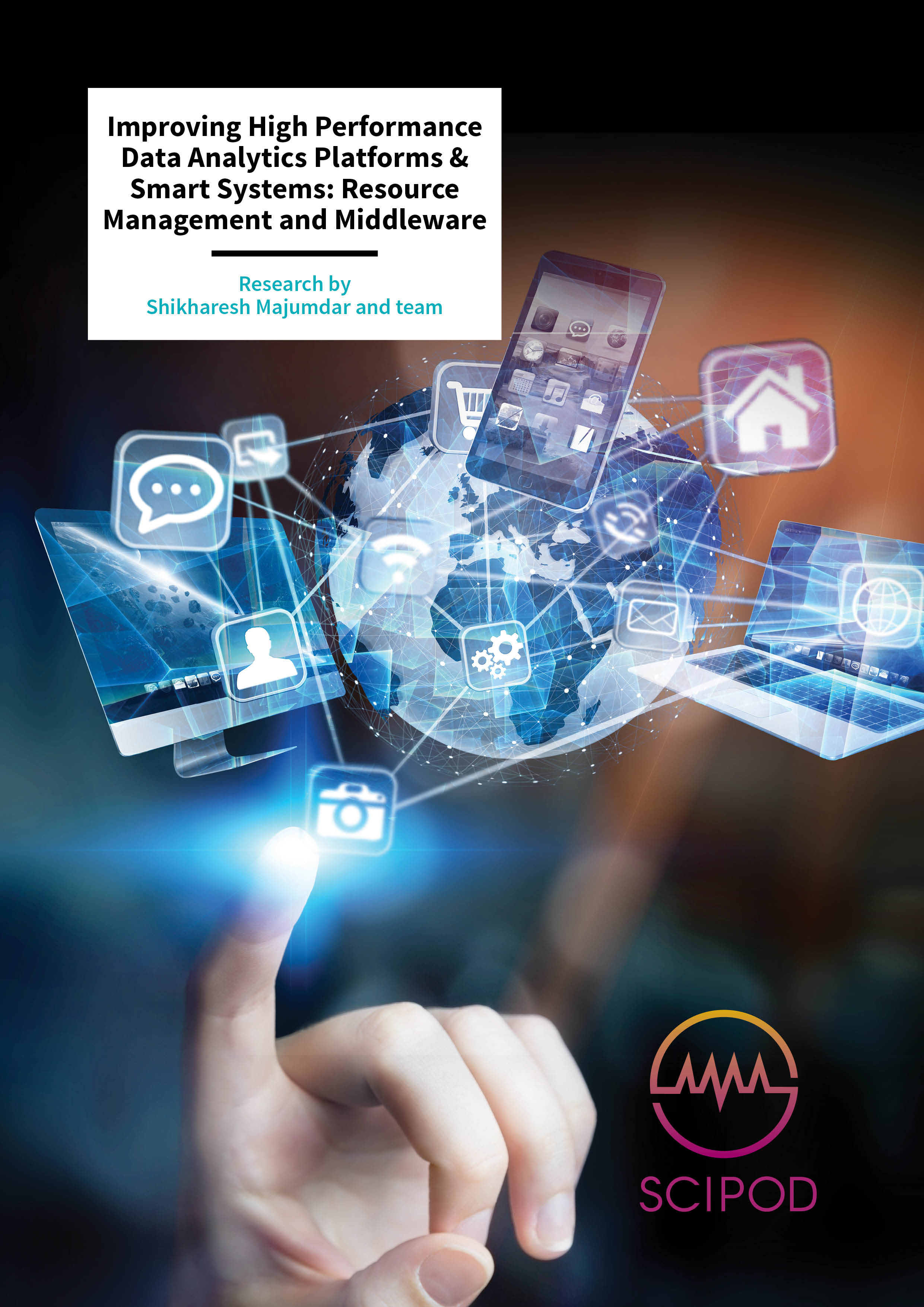
You may also like …
Peroxisomes on the Rise – Professor Michael Schrader, University of Exeter
Peroxisomes on the Rise – Professor Michael Schrader, University of Exeter
Professor Michael Schrader and his team at the University of Exeter are working to decipher how specialised compartments within cells called peroxisomes are formed and function to perform vital roles in processing the lipids that coat nerve cells and in defending the cell against oxidative stress. The team is deciphering the fundamental molecular mechanisms that link peroxisomes to neurological disease and the process of ageing.
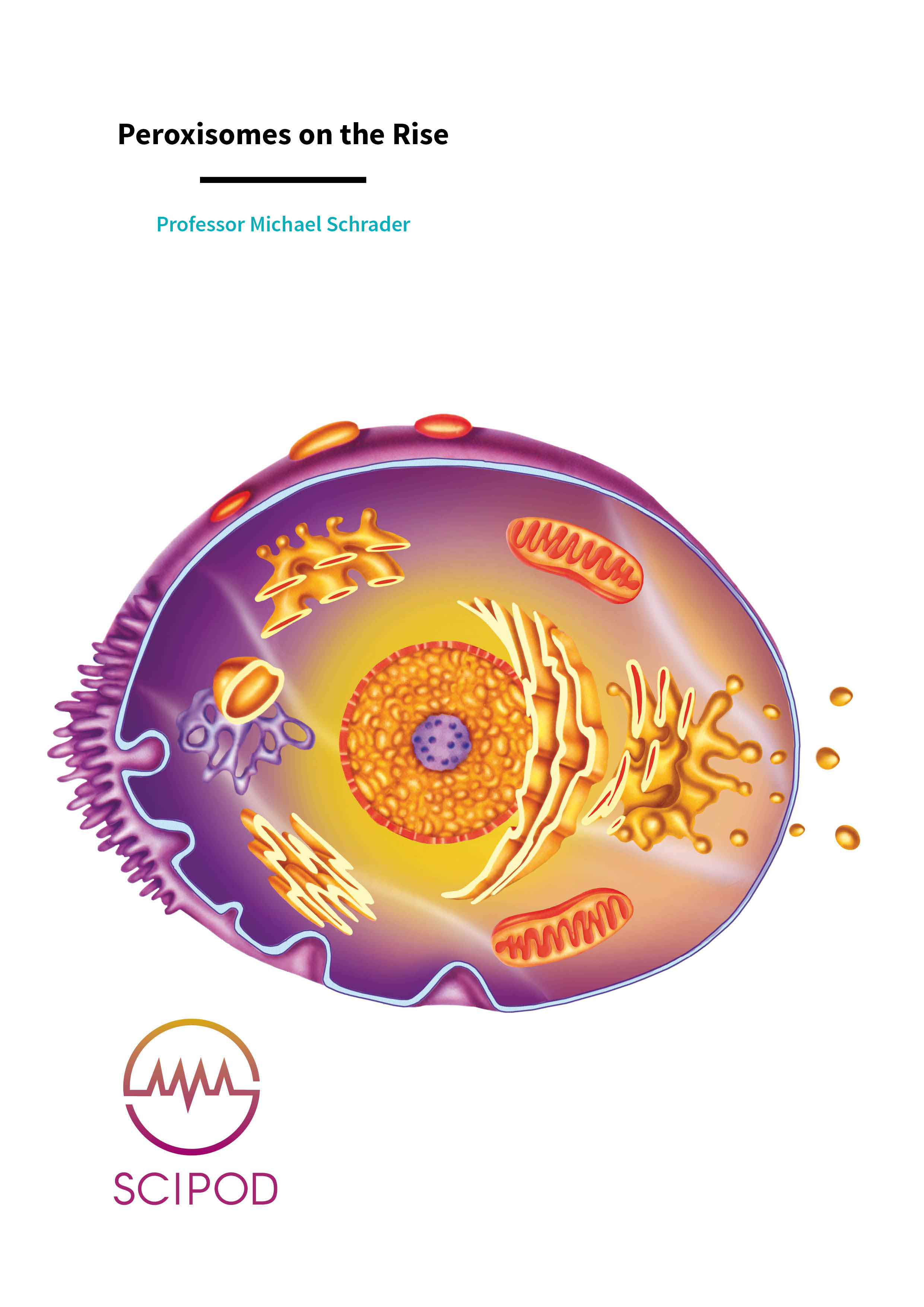
You may also like …
Vitamin D and Preeclampsia, Joining the Dots – Professor Yuping Wang, Louisiana State University Health Sciences Centre
Vitamin D and Preeclampsia, Joining the Dots – Professor Yuping Wang, Louisiana State University Health Sciences Centre
Preeclampsia is a common but serious complication of pregnancy that can harm both mother and baby. Recent research has identified vitamin D deficiency as a risk factor for developing preeclampsia and also the beneficial effects of vitamin D supplementation on this pregnancy disorder, but the mechanisms for this are still not clear. Professor Yuping Wang at Louisiana State University has been investigating this question by studying the effects of vitamin D on the placenta.
